
As you are aware, stars have extremely high internal temperatures. It is this high temperature that initiates thermonuclear reactions. When a molecular cloud undergoes compression due to gravitational forces, it undergoes heating, which increases as the mass of molecules becomes sufficient. This leads to the synthesis of helium from hydrogen, or in simpler terms, the birth of a star.
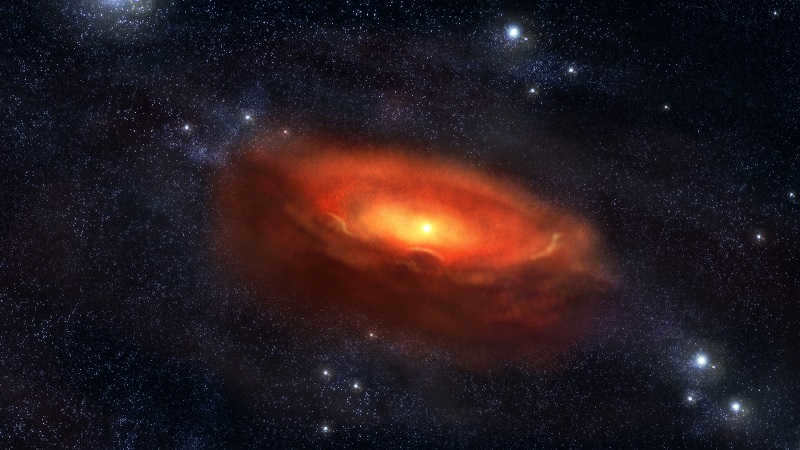
Despite the fact that all clouds are composed of hydrogen molecules, they vary in the quantity of its particles. This leads to variations in the mass of protostars. However, the process of star formation remains relatively consistent.
Primarily, the temperature of stars increases during their initial formation, as well as during the reactions that occur in their core. Subsequently, the heat generated in the central region of the star rises to its outer layers, or surface. As the interior of different celestial bodies varies, so does their surface temperature.
It is important to mention that the heating of the brightness cannot be identical internally and externally. It is fascinating to observe that the stellar corona (the outer region of the atmosphere) is significantly hotter than the lower atmospheric layers, although the nuclear heat remains the most intense.
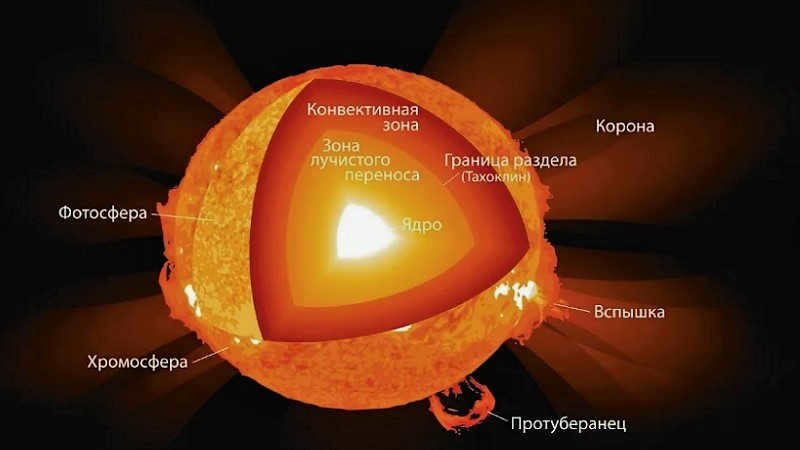
Determining the Temperature of a Star
Two primary factors determine the temperature of a star.
Firstly, the temperature is influenced by the level of energy generated within the star’s core. Scientists estimate that the core reaches temperatures of up to 15 million degrees. However, only the heat from thermonuclear reactions is released, while the energy from gravitational compression remains trapped within the core.
The surface temperature of a star is directly affected by the intensity of internal processes and the elements involved in them. For instance, if the synthesis reactions involve not only the conversion of hydrogen into helium but also the fusion of heavy elements, the radiative energy emitted will be significantly higher. Consequently, the surface of the star will become hotter.
When stars increase the size of their outer envelope, their core also expands. As the core becomes denser, it also becomes hotter. However, this increase in temperature only applies to the inside of the star. In the photosphere, which is the outer layer of the star, the temperature remains low. To put it simply, a larger surface area requires more energy consumption.
Furthermore, there is a correlation between the size, mass, luminosity, and temperature of stellar objects. For instance, a stellar body with a higher mass will have a greater luminosity and therefore more heat. It is important to note that the temperature of a star determines its color. This relationship between stellar characteristics is illustrated in the Hertzsprung-Russell diagram.
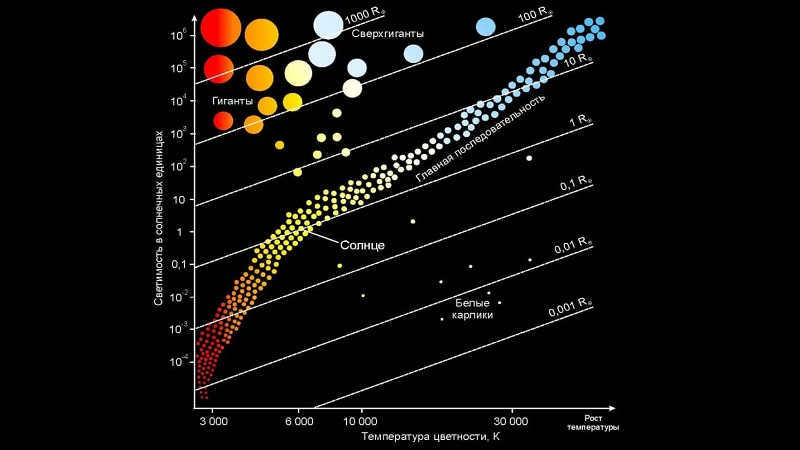
It can be observed that spectral classes exhibit distinct characteristics that set them apart from each other.
How to determine the temperature of stars and what it is measured in
It is important to note that the effective temperature of a star is determined by its thermal energy. In other words, the hotter the star, the more energy it emits. This emission of energy is known as luminosity in the case of stars.
However, the effective temperature of stars is determined using the Stefan-Boltzmann law, which states that the amount of heat radiated by a heated object is directly proportional to its surface area and the fourth power of its temperature.
where σ is a constant factor equal to 5.7*10-8, S represents the area, and P represents the radiated power.
Indeed, the temperature of stars is measured in Kelvin (K). It is possible to convert it to degrees Celsius (C).
What are the possible surface temperatures of stars?
Scientists estimate that the surface temperatures of individual stars vary. Cooler stars have temperatures between 2000-5000 K, while yellow and orange stars have average temperatures of 5000-7500 K. Hotter stars can reach values as high as 7500-80000 K.
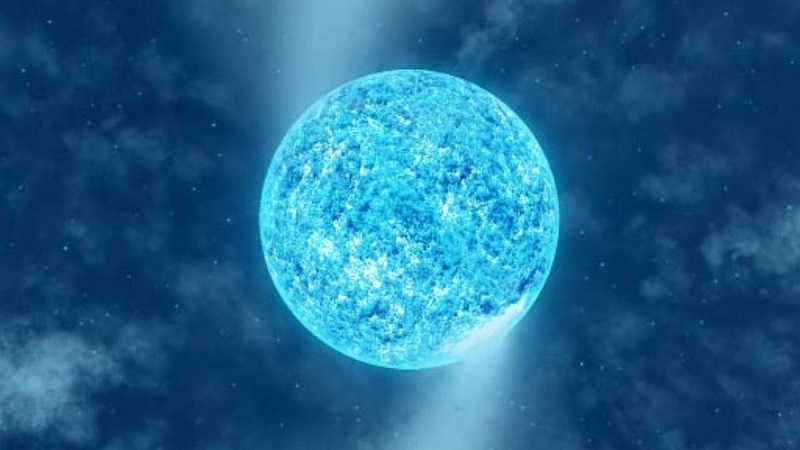
Stars with the lowest temperature
The stars that have the lowest surface temperature are those that appear red in color. However, it would be inaccurate to label them as cold, as their temperature still reaches 2000-3000K.
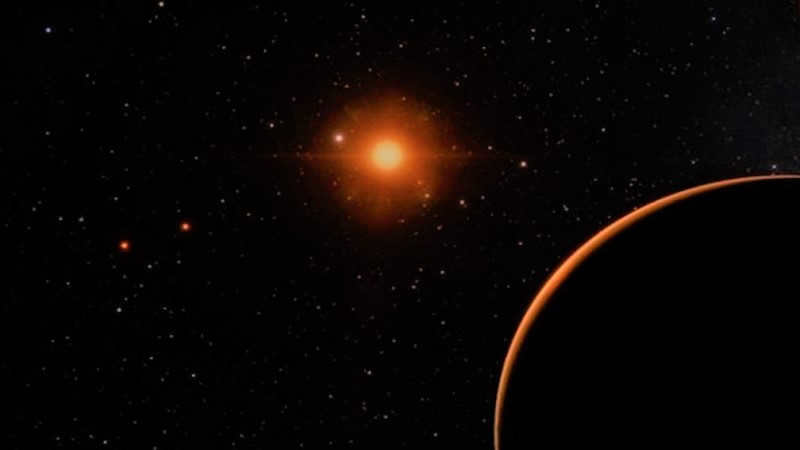

Which stars have the lowest temperature?
Have you ever wondered about the temperature on the surface of the coolest stars?
Interestingly, the coolest stars are usually blue or white in color. However, it is the blue stars that have the highest temperature levels. In fact, their heat levels can reach as high as 40000K.
Therefore, we have discovered that the temperature and size of stars can differ greatly. Furthermore, these characteristics are interconnected.
It is evident that the temperature within a star’s core varies from the surface temperatures it may possess. This further substantiates the individuality of each celestial entity. Despite the potential similarities in certain properties with other celestial bodies, there will inevitably be disparities in other parameters.
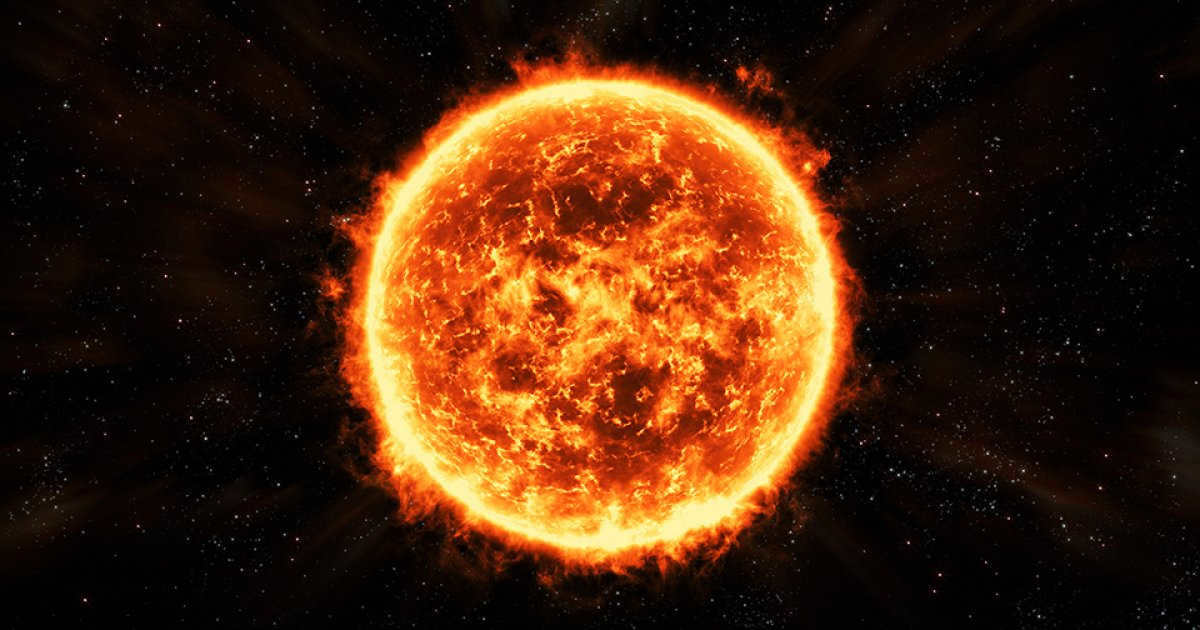
The knowledge about stars that people possess is acquired through extensive observations of their movements and their specific position relative to our planet and within constellations. Additionally, stars are categorized into various subtypes, with new groups and classes continuously being identified.

In the relatively recent past, approximately half a century ago, scientists made the groundbreaking discovery of the most scorching star. However, it wasn’t until the 2000s, with the aid of cutting-edge technology, that this hypothesis was officially confirmed. Additionally, there exists a star that shines the brightest, although it remains invisible to us from Earth due to its immense distance. When considering which star holds the title for being the largest and most luminous, our closest celestial neighbor – the Sun – is often the first to come to mind. However, this dwarf star falls far short of such impressive measurements.
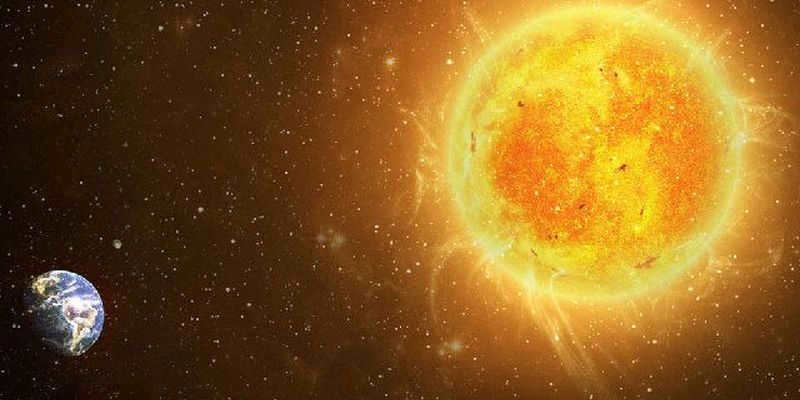
Stars in the Universe: A Glimpse into their Mysteries
Every single star in the vast expanse of the Universe possesses its own unique origin story, a captivating past, and an intriguing future. Despite residing light-years away from our humble planet, these celestial entities present themselves to us every night, adorning the dark sky with their mesmerizing beauty, leaving humanity in awe.
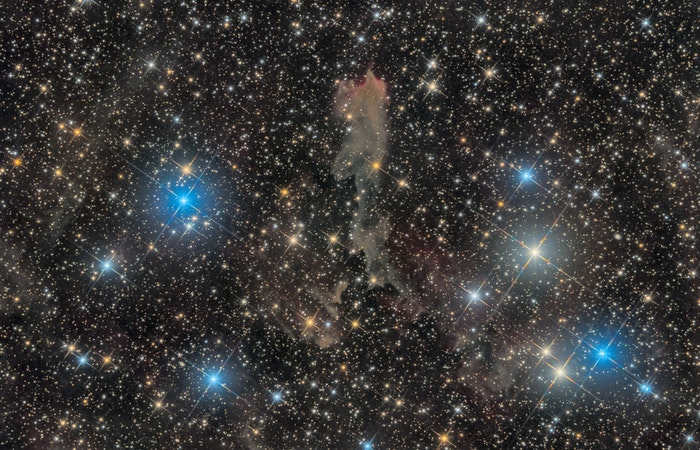
- huge stars;
- massive stars;
- giant red stars;
- dwarfs with low mass;
- brilliant white stars;
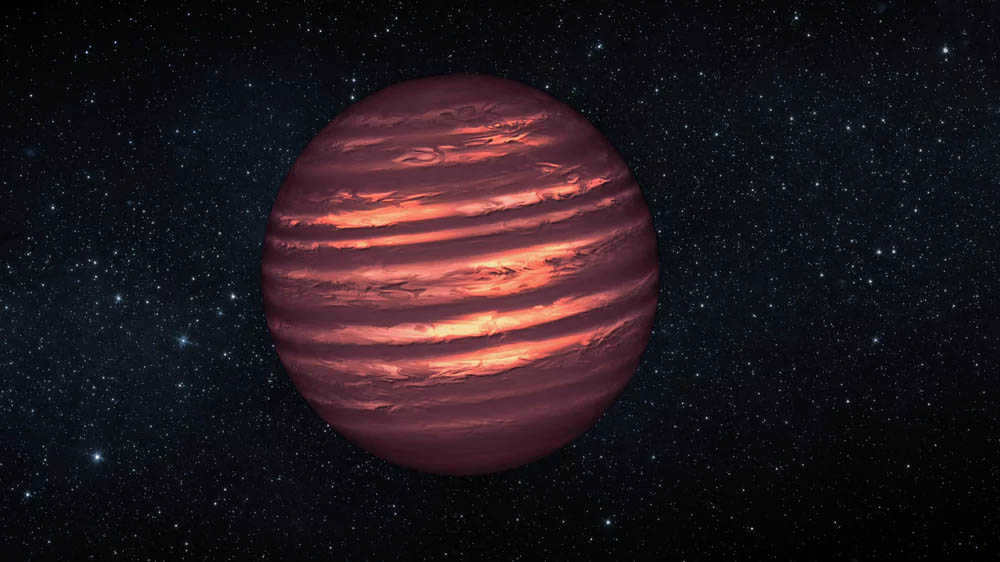
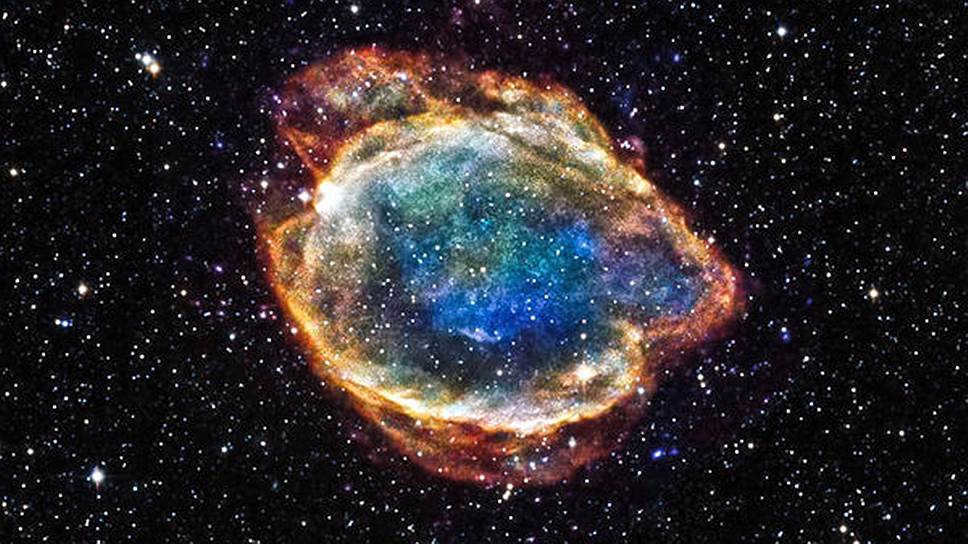
- doubles;
- bright blue color;
- neuronal activity;
- star formations;
- clusters of globular shape.
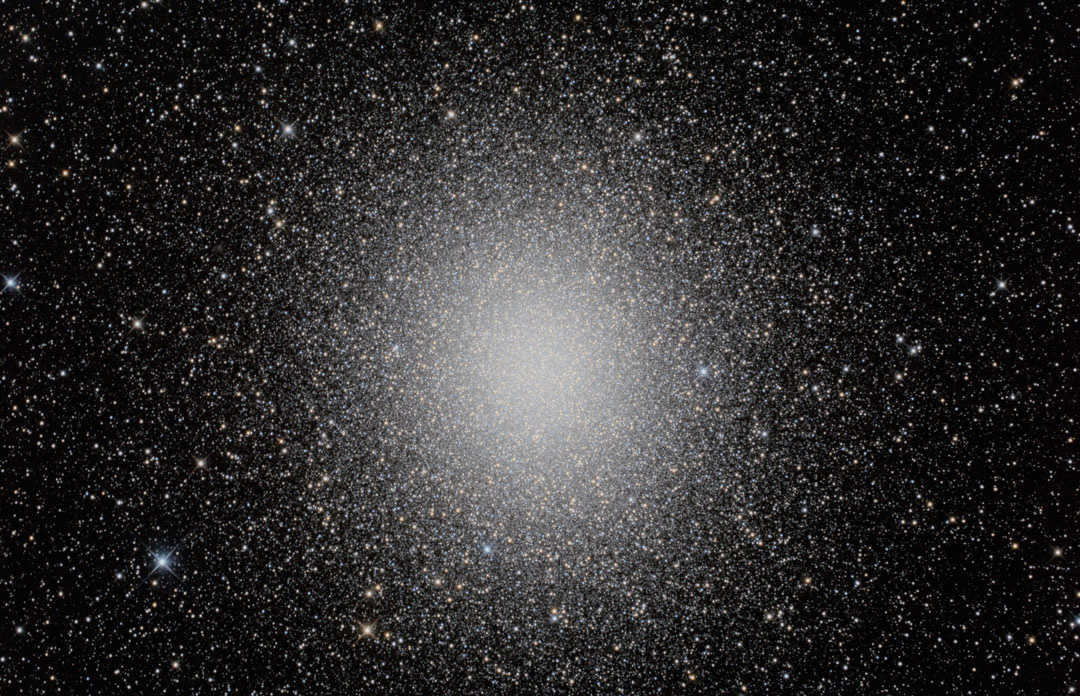
The majority of nocturnal luminous spheres come in pairs, with the two celestial bodies revolving around a shared center of gravity. Some systems even consist of four or six members.
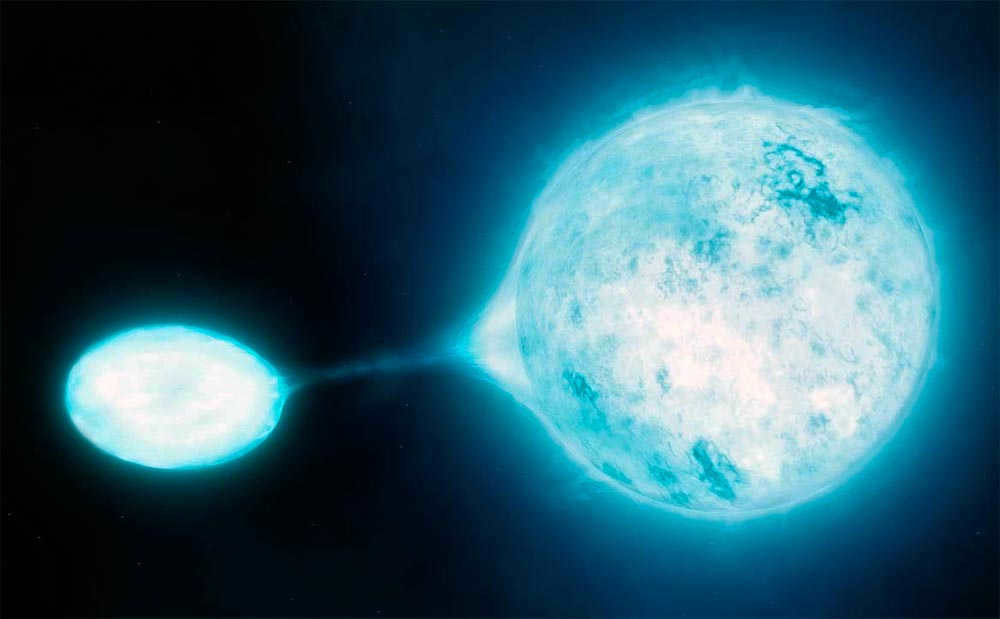
The most dominant category is comprised of red dwarfs, which generate a smaller amount of energy compared to the Sun. These stars have the ability to sustain their fuel reserves for millions of years.
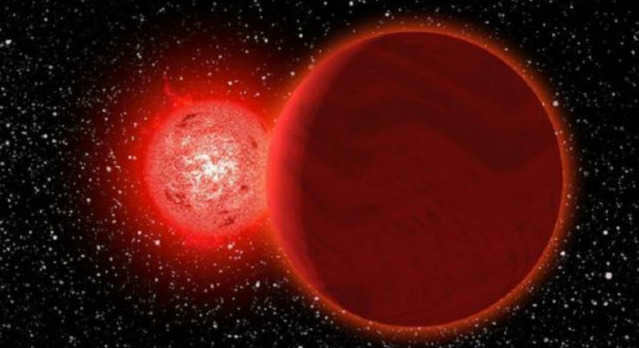
The color of the hottest celestial bodies can differ.
Take the Sun, for instance, its shade is a bit lighter, ranging from deep yellow to vibrant orange. This distinction suggests that its temperature is slightly higher than the lowest possible level.
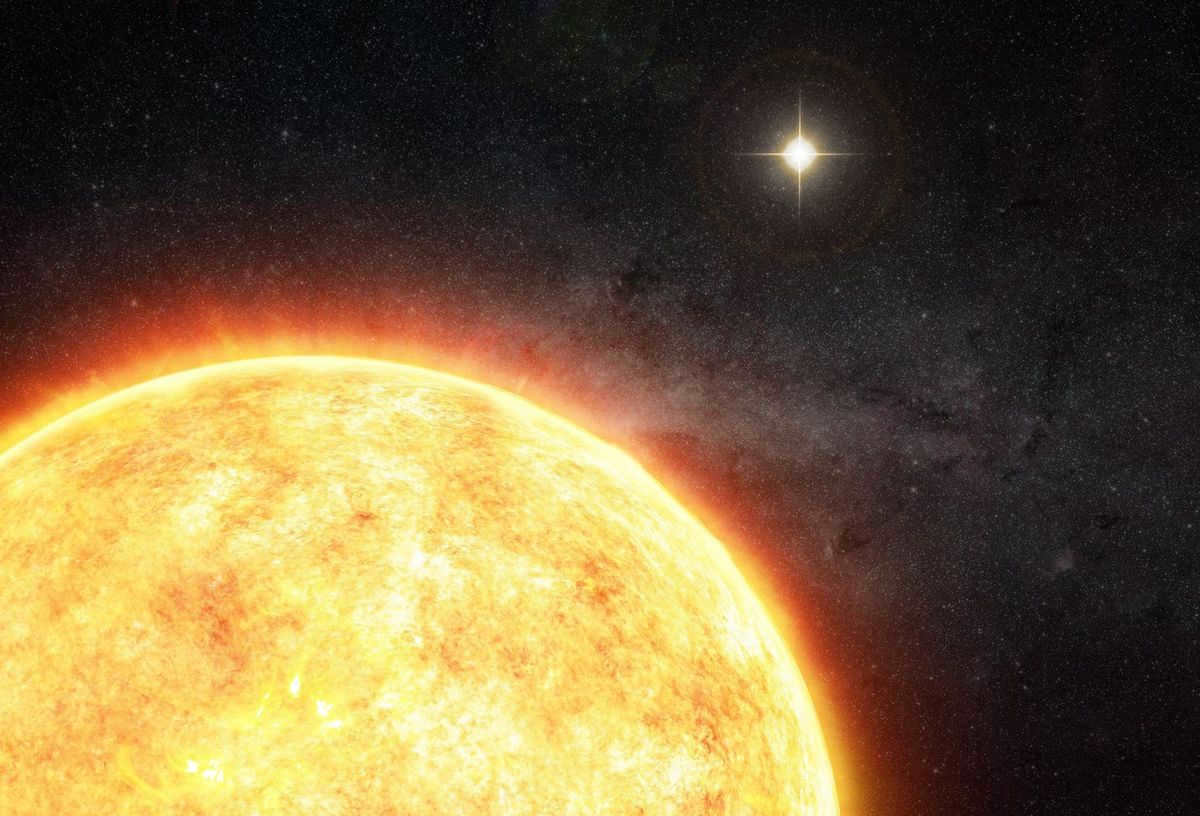
Diagram of the stars closest to our Sun:
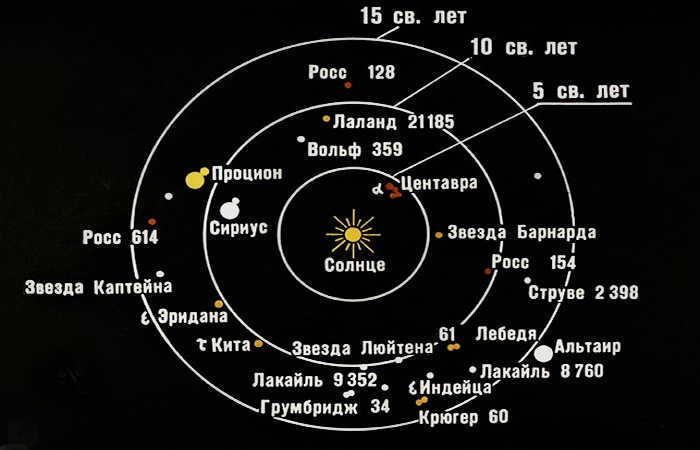
The highest temperature accumulation occurs due to blue luminaries, resulting in a bluish illumination. However, color alone does not solely determine body temperature. It is also closely linked to the mass of the star. The greater the mass, the larger the core within it and the greater the magnitude of nuclear fusion.
The temperature of a star’s surface is reflected by its color
There is an interconnectedness in everything, including temperature. The brightest white color of the hottest star in the Universe signifies its intense heat, with a bluish appearance to its glow.
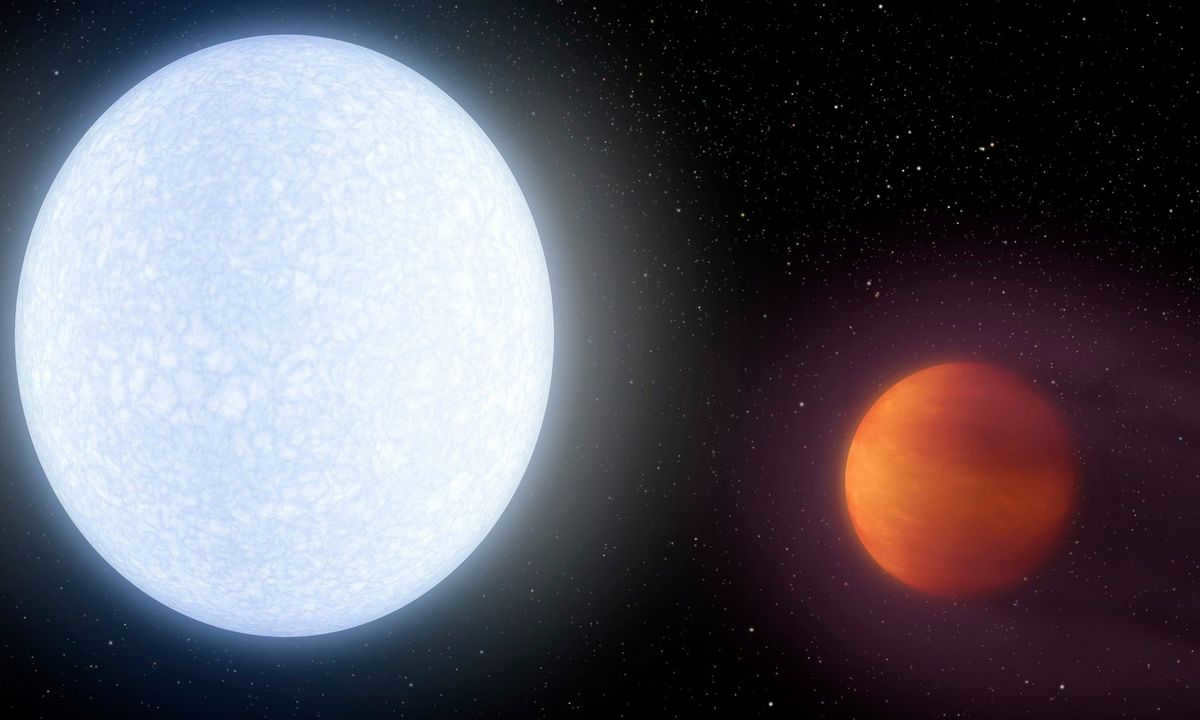
The color of low temperature stars is red. The Pleiades, a star cluster in the Taurus constellation, is an excellent example of a blue illumination. From the perspective of Earth, all cool celestial bodies will have a reddish-orange radiance.
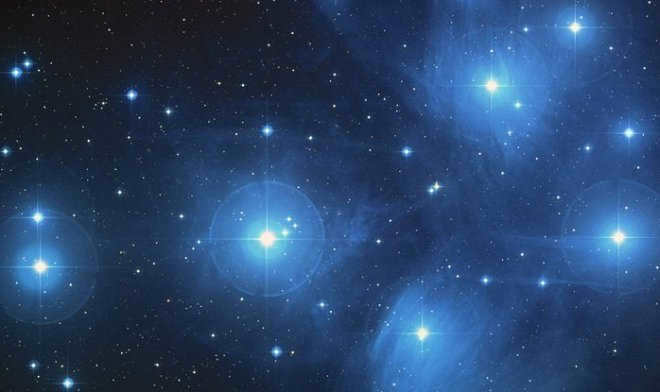
Contrary to popular belief, aggressive colors are not always bright and hot. This can be seen in the case of the Betelgeuse star, which has a temperature of 3600 K (Kelvin) and is actually a cool star.
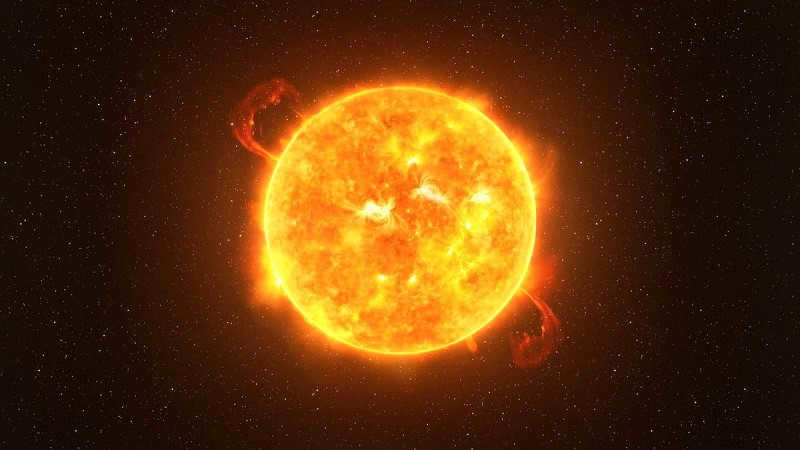
By analyzing stellar spectra, astrological researchers have discovered a more accurate correlation. Spectral lines play a crucial role in this relationship, as the distribution of energy in the spectrum depends on their quantity and intensity.
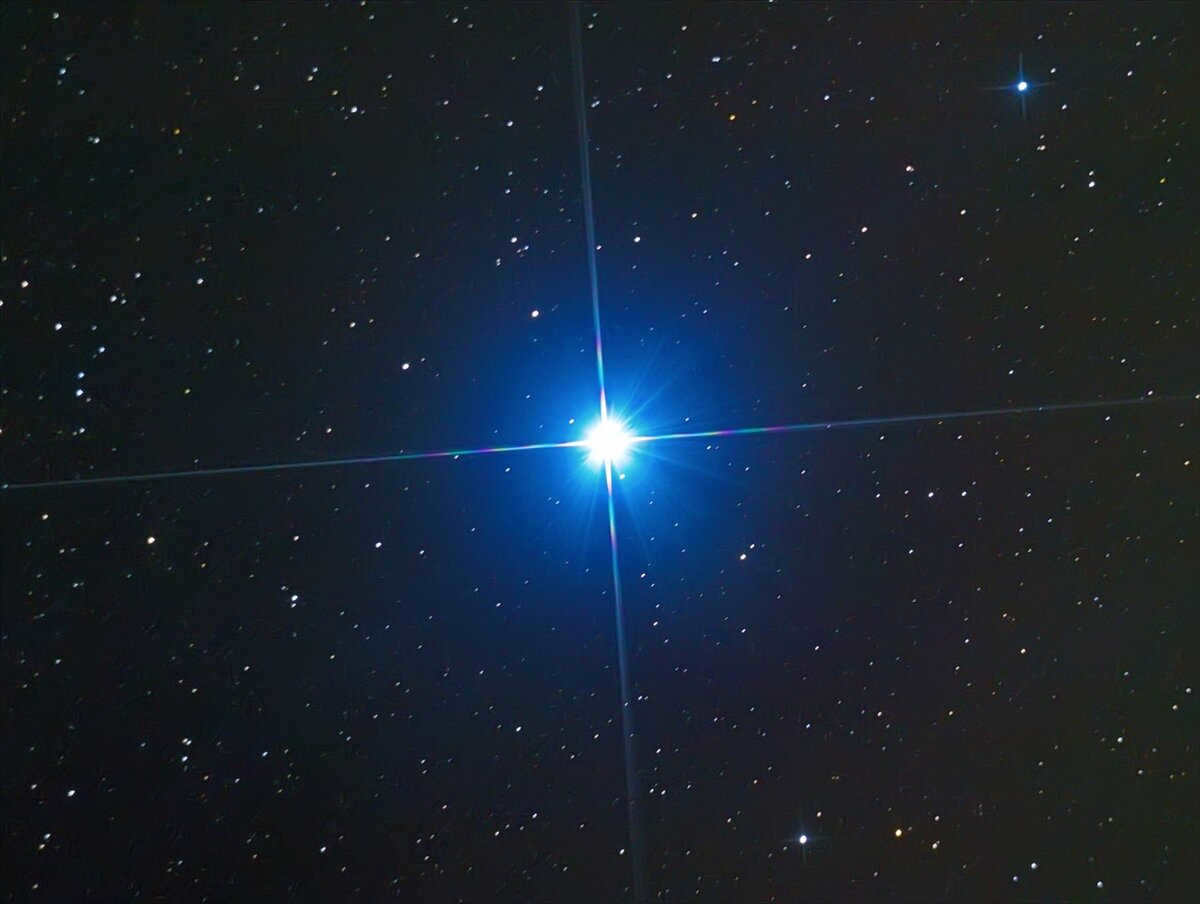
Researcher V.Vin discovered a correlation between the wavelength and the luminosity of an object. The composition of atoms and molecules influences the characteristics of the spectrum.
A system of spectral classification was developed to categorize celestial bodies based on their unique luminosity spectra.
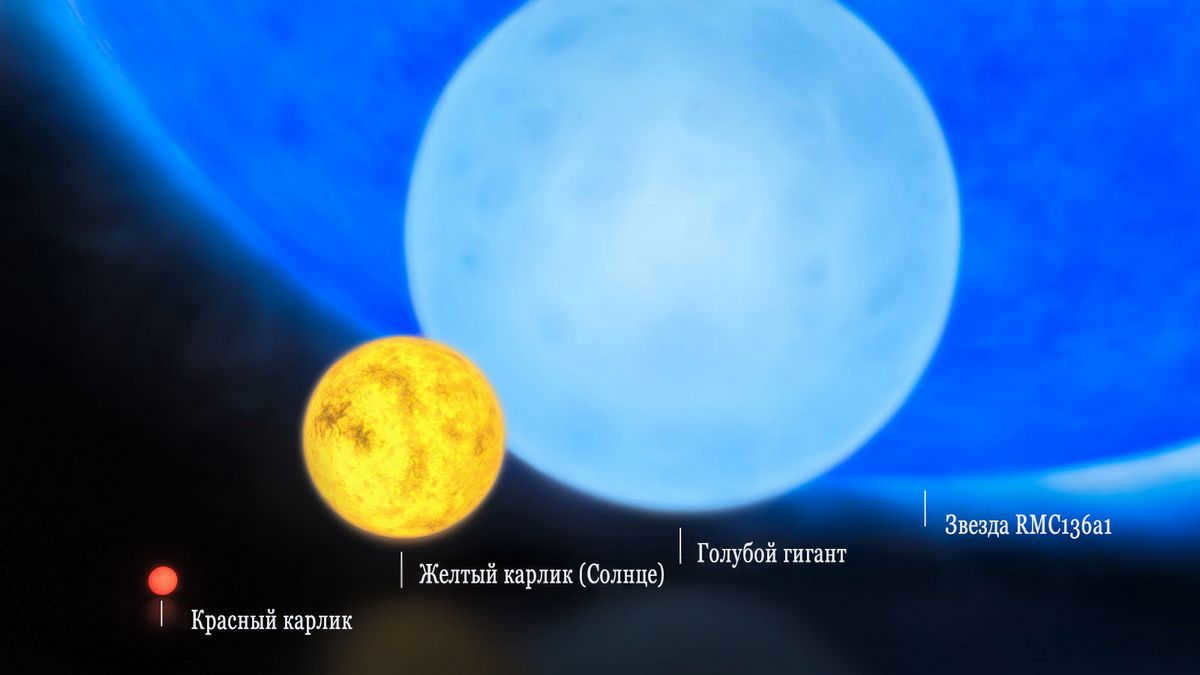
Harvard University uses Latin letters to classify radiation:
- “O” (30,000-60,000 Kelvin). The “O” class is extremely hot.
- “B” (10,000-30,000). They have a bluish-white color. An example is the star Spica in the Virgo constellation.
- “A” (7,500-10,000). The brightest representative is the star “Sirius” in the Big Dog constellation.
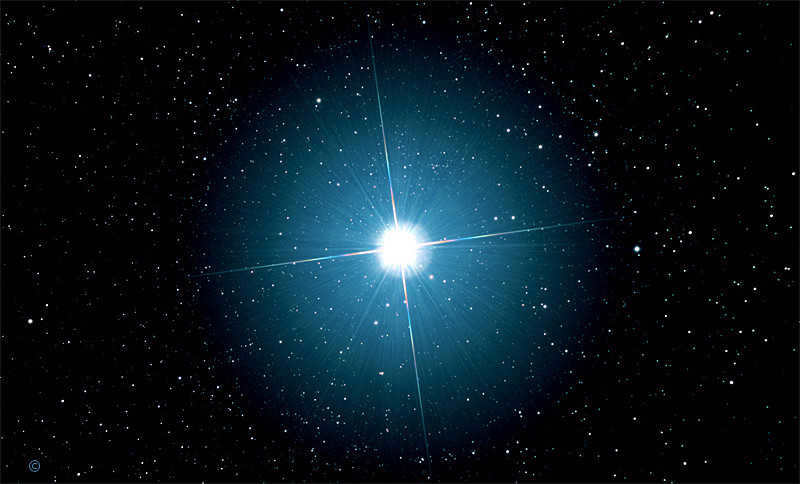
- "F" stars (6.000-7.500) emit a yellow-white light. They are represented by Procyon A and Procyon B.
- "G" stars (5.000-6.000) are best exemplified by our sun.
- "K" stars (3.500-5.000) have an orange hue, such as "Arcturus" in the Volopas constellation.
- "M" stars (2.000-3.500) are cold stars that emit a bright red and dark orange glow.
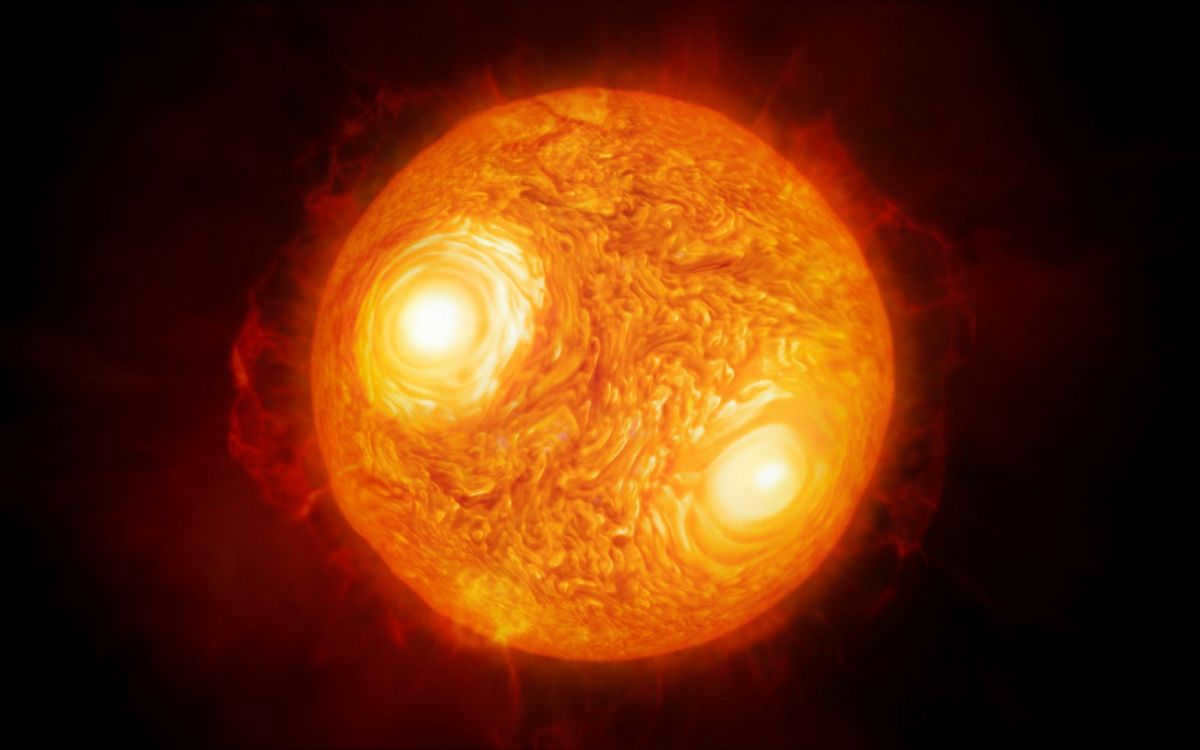
Which star is the most sizzling? Is it only the one that glows with a whitish hue? There is a special case to this generalization – red giants. These stars can be as large as the Sun, but they exist in the form of a white star. Eventually, such a star will start to expand, growing in size and intensifying in brightness.
A blue star will always be huge and scorching.
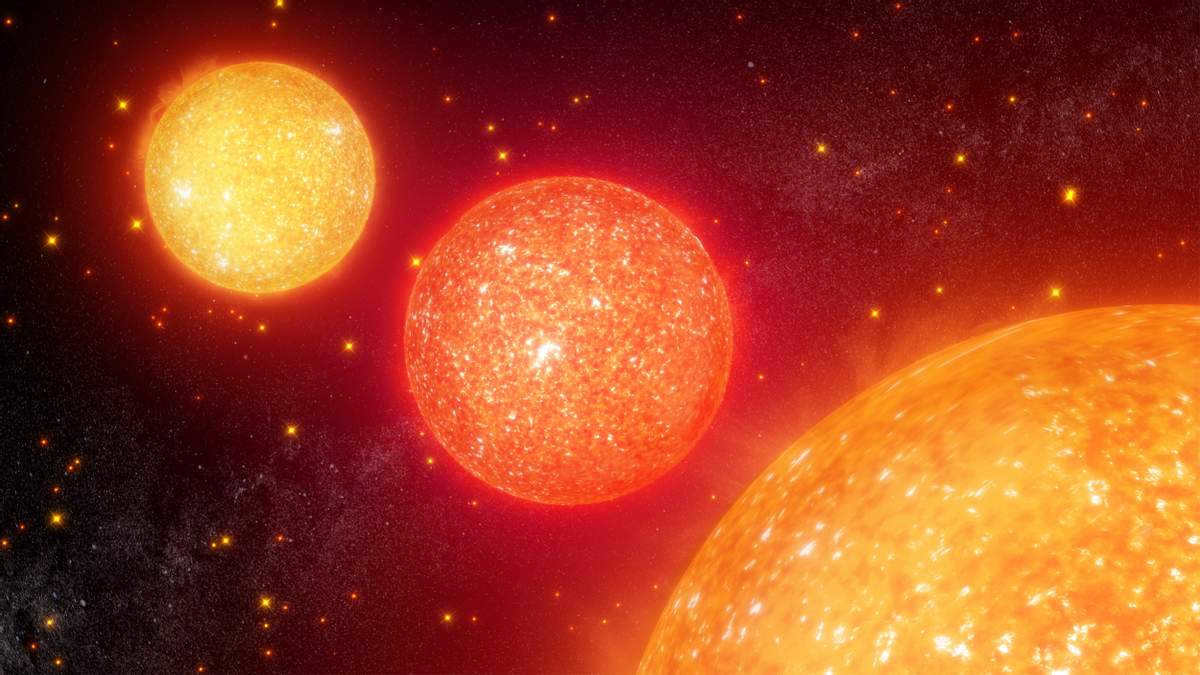
Here is a table that displays the spectral classification of stars:

A fascinating observation is that larger stars have a shorter lifespan. These massive celestial bodies generate immense amounts of energy and deplete it rapidly, resulting in their swift demise. In contrast, smaller stars like our Sun can exist for billions of years. However, giants like Coquille, a red giant, flare up brilliantly but burn out quickly, resembling a matchstick. Scientists predict that when Coquille eventually explodes, the planet will experience an extended period where night and day are indistinguishable.
Stars act in a similar way to heated iron.
If you have observed the heating process of metal, you may have noticed that it goes through various color changes before reaching its maximum temperature. Let’s consider a regular metal rod as an example. When heated intensely, it will initially appear as a vibrant scarlet shade.
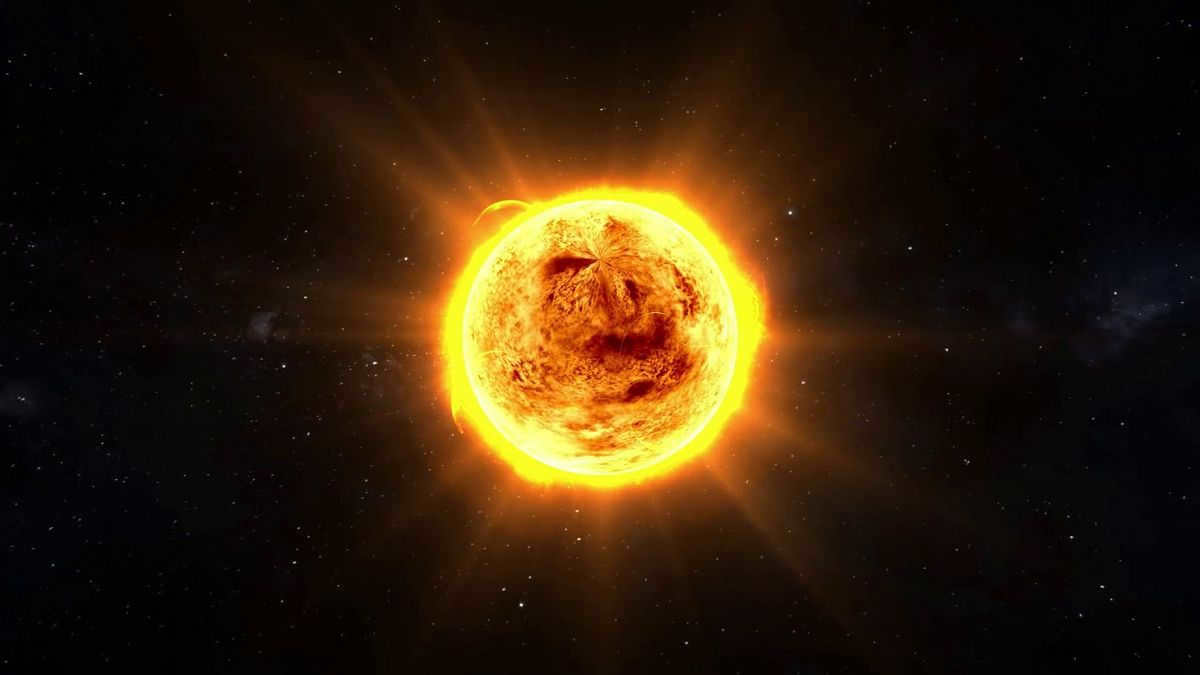
By continuously applying heat to the iron, the vibrant red hue will gradually transform into orange, then yellow, and finally light yellow.
As the temperature continues to rise, the metal will lose its brightness entirely, assuming a white color. At the pinnacle, it will appear as a light blue shade. These experiments demonstrate the parallel between stars and a piece of metal.
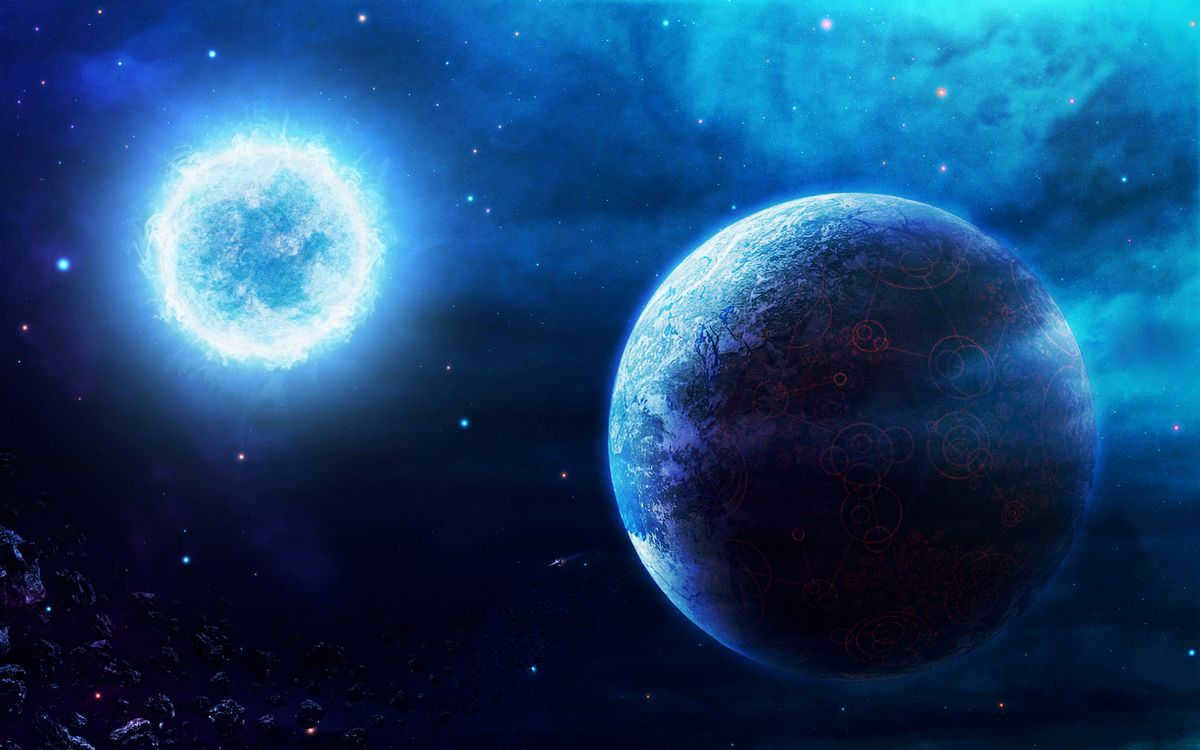
The method of warming them up remains identical. 88% of all nighttime celestial bodies fall under the cold category, while only the remaining few can claim to possess exceptionally high temperatures both internally and externally.

A star does not come into existence with a vibrant blue color; instead, it gradually acquires temperature and, consequently, its color over an extended period. The transformation of a star depends on its original mass and the continuous process of atom fusion, which results in the constant production and consumption of atoms within the star.
SMC3: The Most Scorching Star in the Entire Universe
Within the vast expanse of space, countless asteroids, meteorites, and an incalculable number of galaxies can be found. Among these celestial wonders are the blazing fireballs known as stars. While it was once widely believed that our own Sun held the title of the hottest and brightest luminary, recent discoveries have proven otherwise.
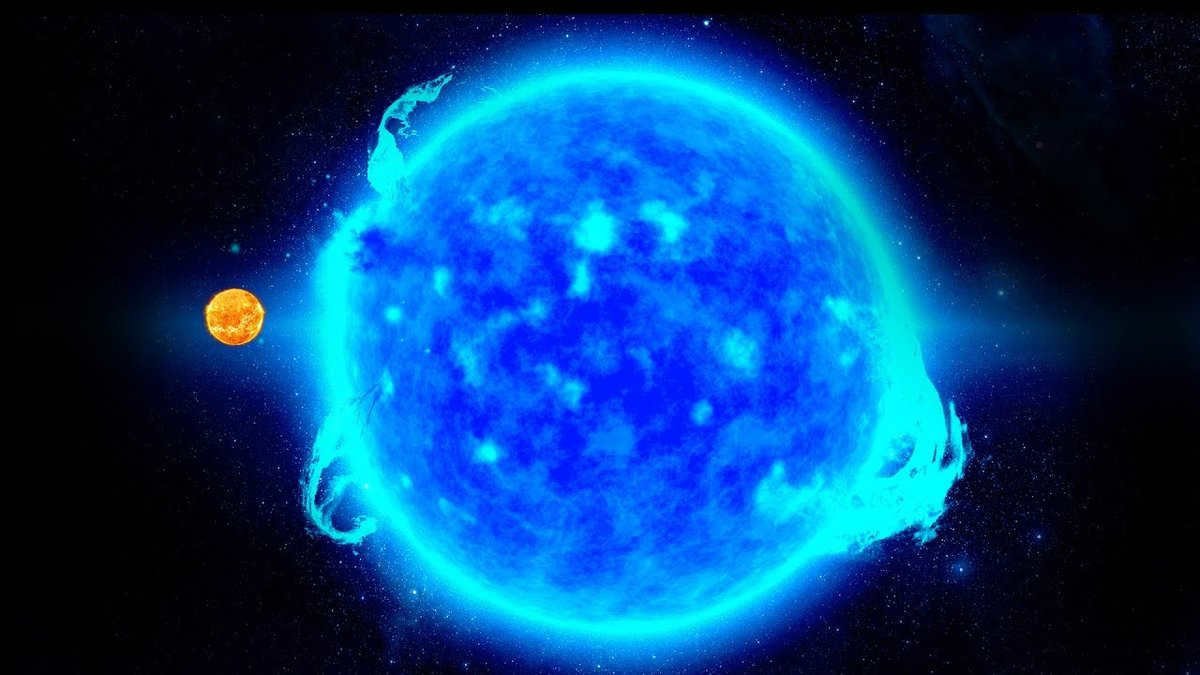
There exist celestial entities that are thousands of times more scorching than it. The extreme heat emanating from the most sizzling entity in the entirety of the Universe has the ability to liquefy any celestial body that ventures too close to its vicinity. One such extraordinary star, known as Wr102, holds the title of being the hottest object in the Universe. The inner core of any incandescent celestial body within the cosmos is heated to unimaginable temperatures.
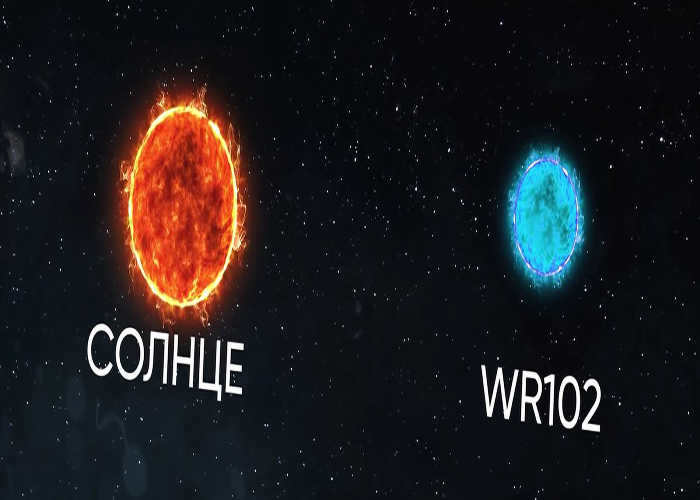
The synthesis of molecules and atoms that power the stars only happens at such extreme temperatures. The increase in temperature of an object is not solely due to gel synthesis. Other elements like lithium, carbon, and oxygen can also be involved in the process.
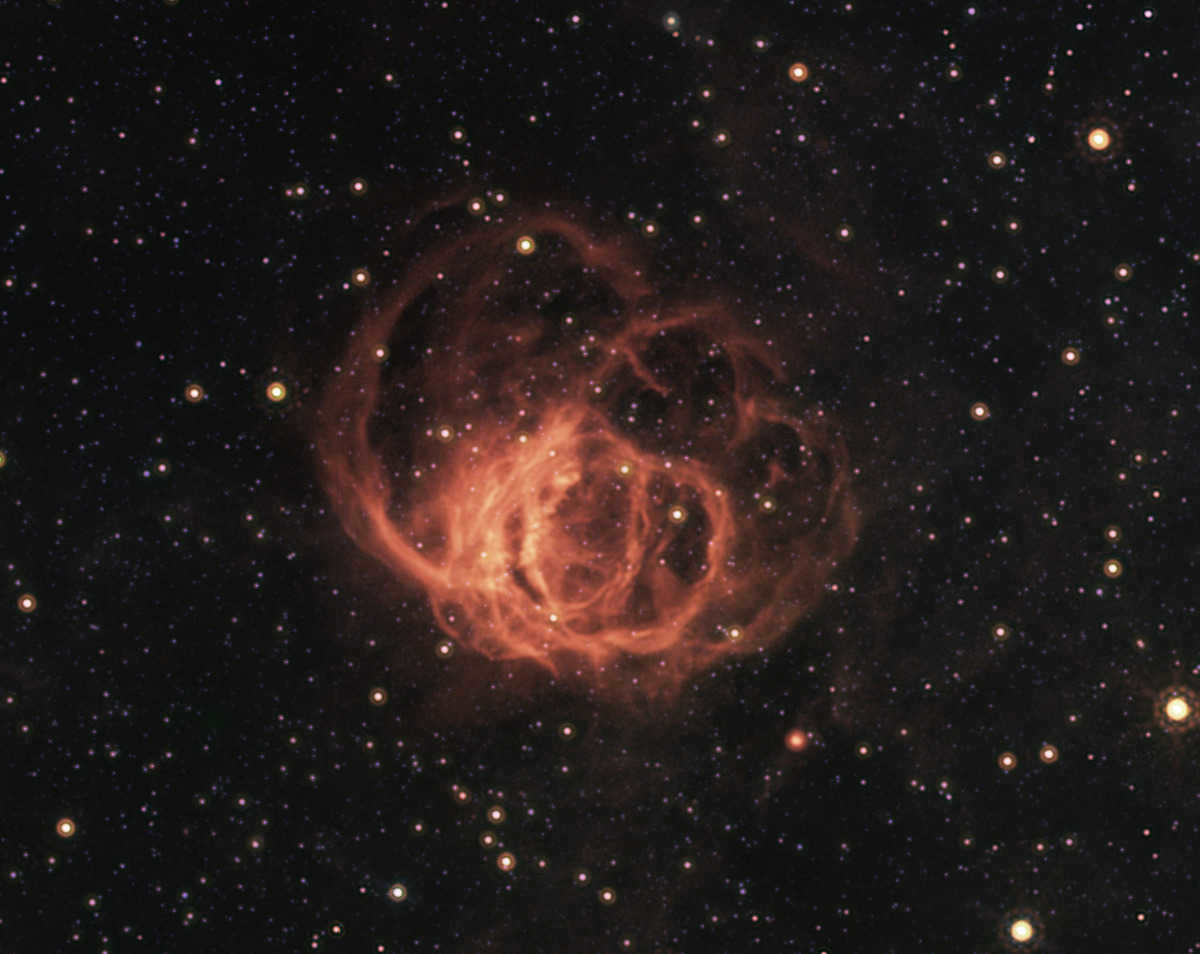
Next, heavy elements like sulfur, phosphorus, and magnesium start to emerge within the core. These elements possess a more intense charge, resulting in a stronger repulsion force among them. As the supply of substances diminishes, the stellar mass contracts in size and cools down.
However, stars that surpass a particular magnitude retain their fuel reserve. These stars are commonly referred to as Wolf-Rayet stars.
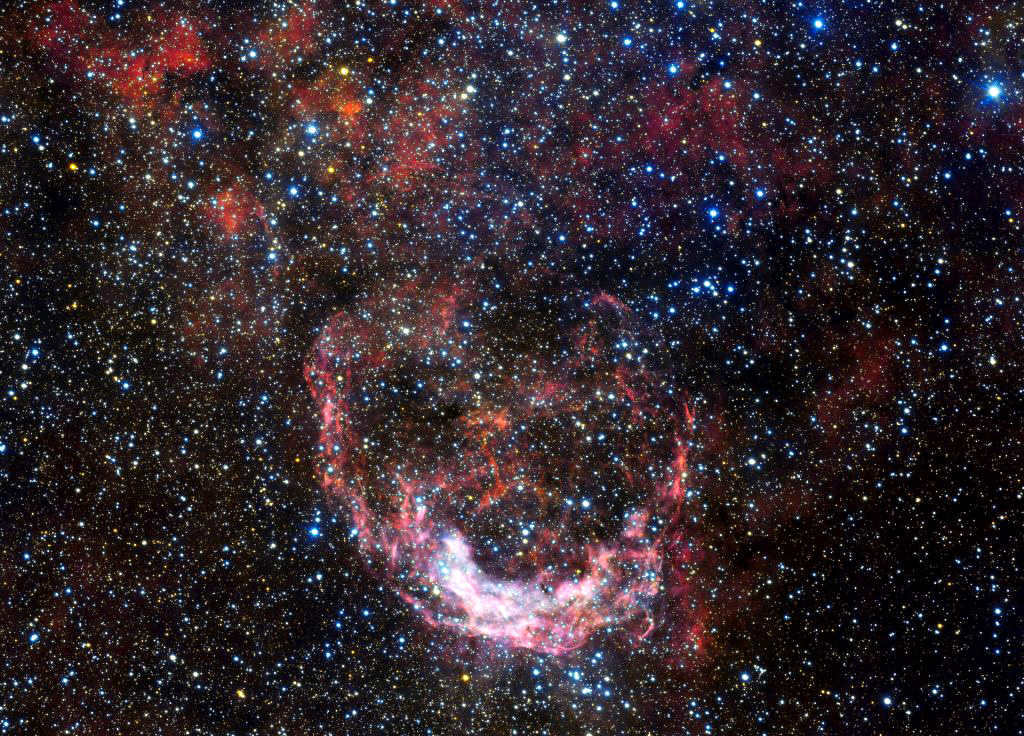
The first place is occupied by the most scorching body in outer space, known as “Wr 102”. This celestial object is distinguished by its radiant spectrum, which is rich in bright oxygen lines. The temperature on its surface surpasses a staggering 210,000 degrees Celsius.
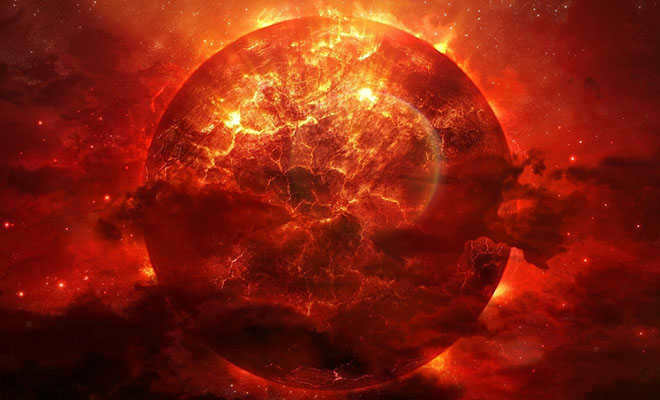
It is 36 times hotter than our Sun. The object’s luminosity is astonishing. It is positioned at a distance of 10,000 light years. “Wr102 can be found in the Sagittarius constellation, although it remains invisible to the naked eye due to its immense distance.
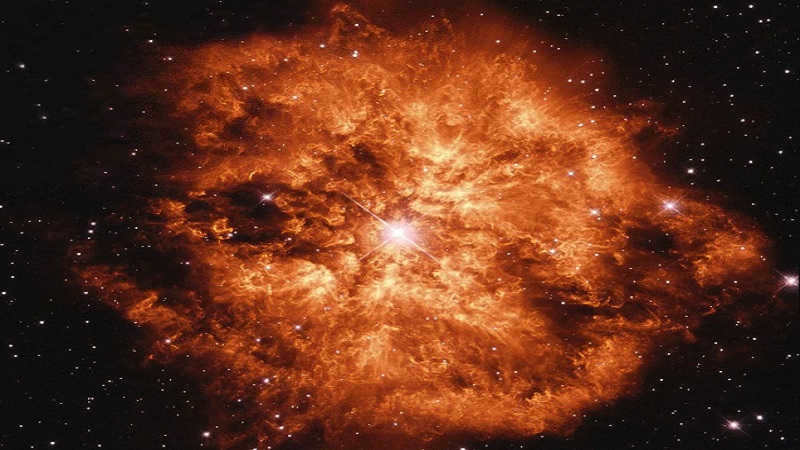
The most luminous star
A star has the potential to be not just the hottest, but also the most luminous. Leading the pack is a supermassive blue giant situated in the “Large Magellanic Cloud” galaxy. It was unearthed fairly recently and possesses the highest luminosity index in the entire universe.
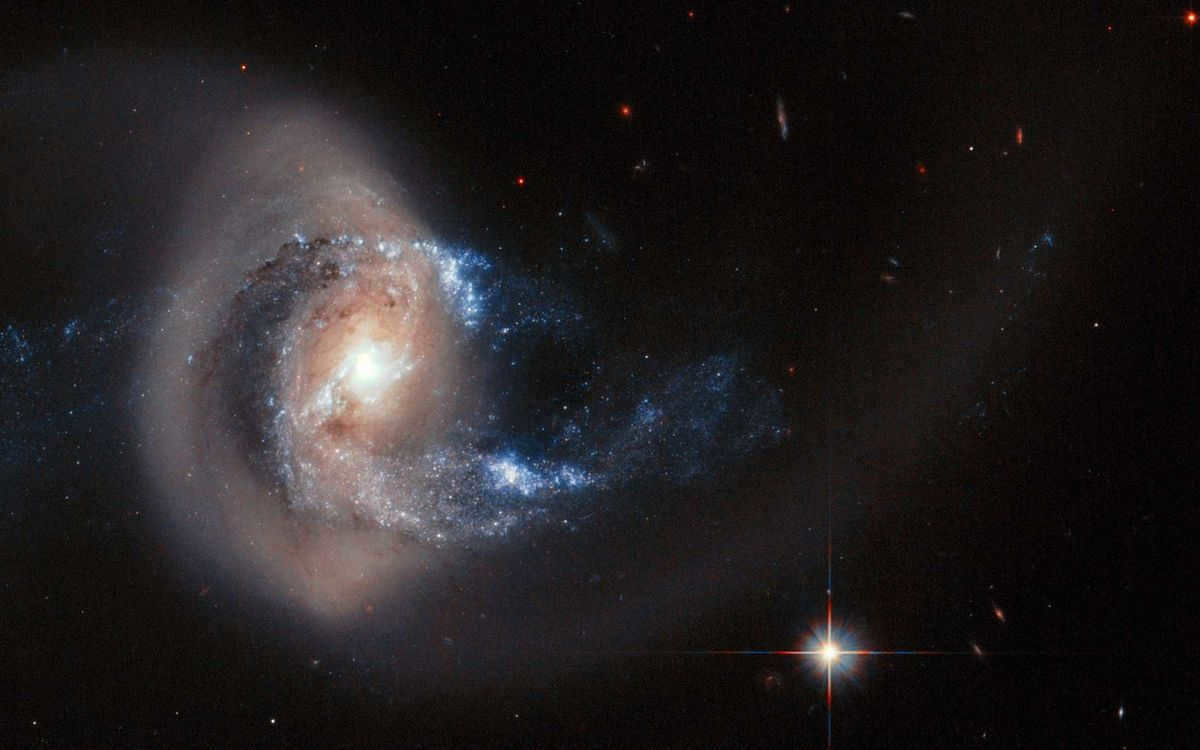
Its name is “R136A1.” This incredibly luminous entity is situated at a distance of 163,000 light years from our location. “The Magellanic Cloud is a small galaxy that was first observed in the 1960s.
Thanks to advancements in modern technology, it is now established that the mass of “R136A1” is equivalent to 206 solar masses.
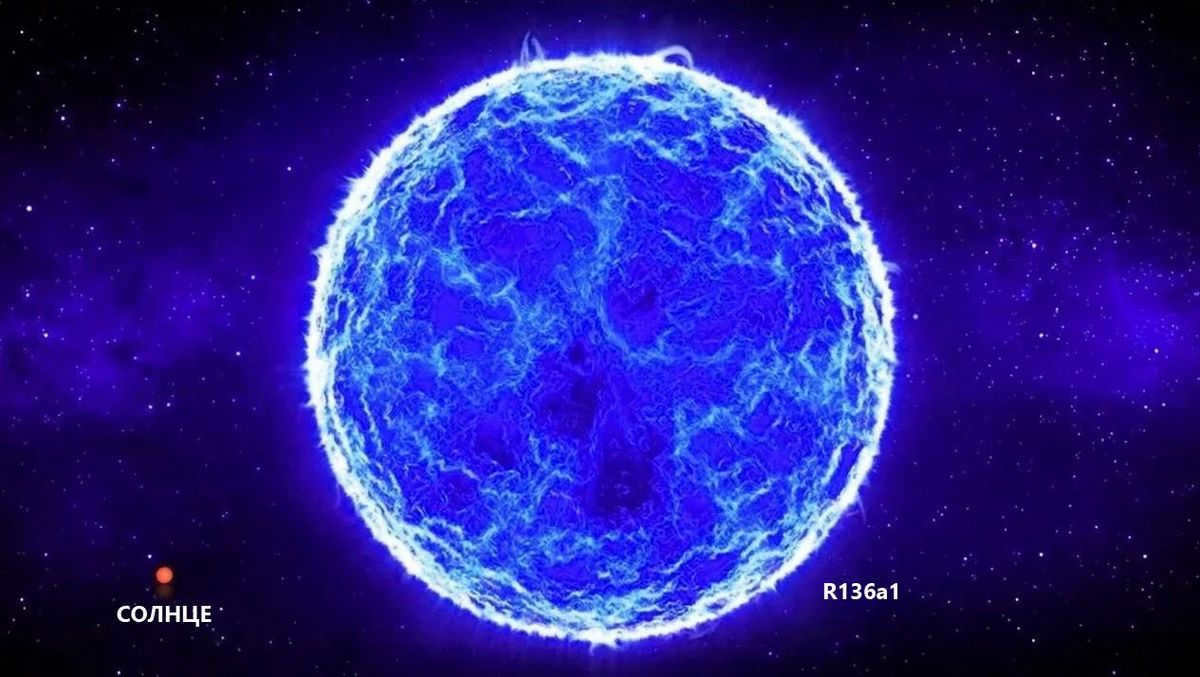
Following further investigation, the estimation rose to 315 solar masses, rendering this celestial body the most massive and luminous one. Additionally, the star exhibits an exceedingly high temperature, reaching 55,000°C, a value nearly tenfold greater than the Sun’s heat.
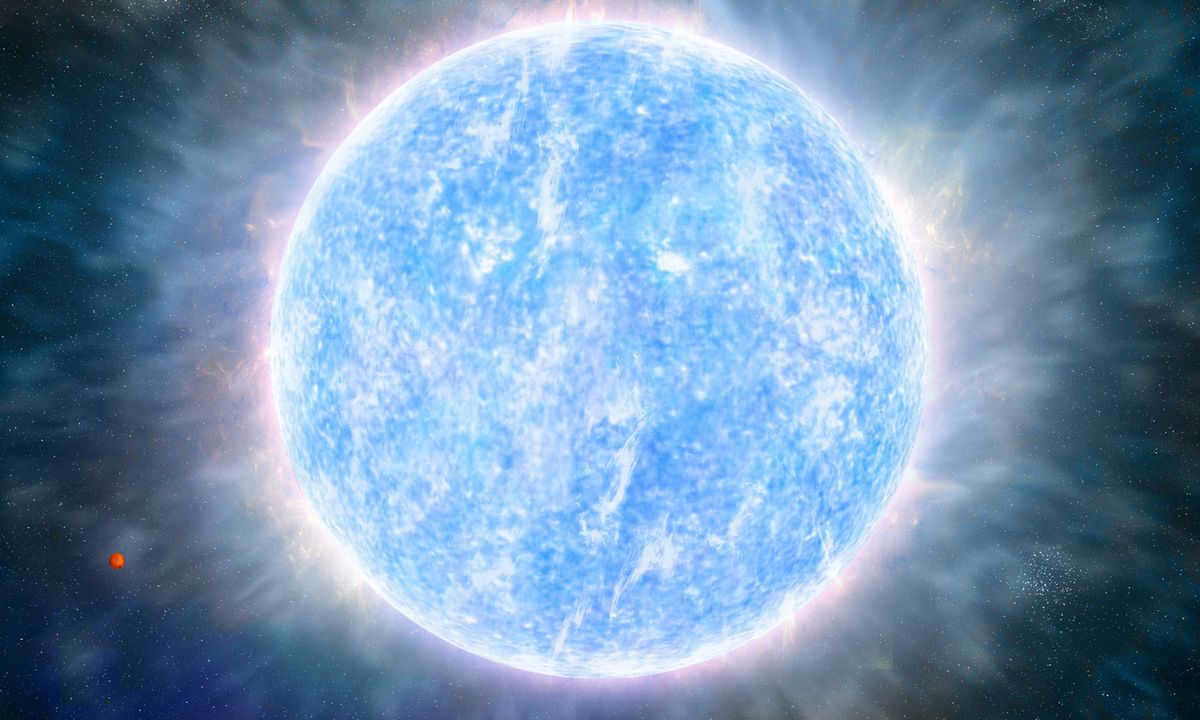
Researchers have developed the ability to determine the distance of every celestial body in the universe by utilizing parallax, which involves observing the object’s displacement and considering its radius and movement duration. At present, this technique can accurately estimate the distance of an entity situated within a maximum range of 300 light years from Earth.
Have you ever observed that the sole star in the Orion constellation to have a reddish hue is Betelgeuse? Perhaps you have also noticed stars that emit light in colors other than white. Have you ever pondered why stars exhibit different colors?
If you are an amateur astronomer or someone who is interested in learning how to capture images of stars, and we have aroused your curiosity, continue reading to discover what causes stars to have different colors and how you can witness a plethora of colorful stars in the night sky.
What causes the variation in color among stars?
Have you ever experimented with adding salt to a campfire in order to alter the color of the flames? Or perhaps you conducted experiments in your school chemistry class where you burned various substances and observed the different colors and intensities produced. These observations demonstrate that different elements burn with distinct colors and brightness.
Let’s think about a campfire again… The hottest part of the flame appears as a blue-white color, while the cooler part emits an orange-red hue. Well, the same principle applies to stars!
There are two primary factors that contribute to the variation in colors among stars:
- Temperature – Cooler stars exhibit a red color, while warmer stars display shades of orange, yellow, and white. The hottest stars emit a vibrant blue light.
- Age – As a star ages, it produces different chemical compounds that burn at varying temperatures. By examining the color of a star, we can determine its relative age.
If you don’t have a telescope yet, take a look at our telescope reviews.
The majority of the stars in the Pleiades are bright and blue, and they are believed to have been formed within the past 100 million years, which is just 2% of the age of our Sun.
A combination of various elements contributes to the color spectrum of these stars. Unfortunately, these are not visible to backyard astronomers, as a spectral analysis is required to observe them.
Scientists can also determine the movement of a star relative to us by analyzing its spectrum. When a star moves away from us, its visible light shifts towards the red end of the spectrum, which is known as “redshift.”
The opposite phenomenon is called “blue shift.” It occurs when a star moves towards us and its light is shifted towards the blue end of the spectrum.
You can find more information about spectral analysis and measuring redshifts in this NASA article.
Now let’s focus on what we as amateur astronomers can determine from a star’s color: its approximate temperature and relative age.
Which colors do the coolest stars have?
The coolest stars have surface temperatures of approximately 3000 degrees Celsius (5400 degrees Fahrenheit), while the hottest stars have surface temperatures exceeding 25000°C (45000°F).
As mentioned earlier, this range of stellar temperatures corresponds to different colors.
The coolest stars in the sky emit a red glow, and as the surface temperature increases, the colors shift towards orange and yellow. The hottest stars emit a light blue color, while the coolest stars emit a darker blue hue.
Arrangement of stars by temperature from hottest to coolest:
- Blue
- Deep blue white
- Blue White
- White
- Yellowish white
- Pale yellow orange
- Light orange red
Star color classification using the Hertzsprung-Russell diagram
Utilizing the Hertzsprung-Russell diagram, we can classify stars based on their color in order to determine their age. Specifically, we analyze their life cycle, discerning whether they are young, middle-aged, or nearing the end of their existence.
Multiple stellar classification systems exist, but we will focus on the Hertzsprung-Russell diagram for simplicity.
The Hertzsprung-Russell diagram illustrates the correlation between a star’s color and temperature (source). It also provides insights into the size of stars, distinguishing between larger and smaller ones, as well as identifying the dimmest stars.
The Hertzsprung-Russell diagram is a graphical representation that shows the relationship between a star’s surface temperature, luminosity, and absolute magnitude.
Absolute magnitude is a measure of a star’s brightness at a specific distance. Typically, astronomers use relative magnitude to determine how bright a star appears from our vantage point on Earth.
The X-axis of the H-R diagram represents temperature in Kelvin (where 0 Kelvin is the coldest possible temperature, equivalent to -273.15 degrees Celsius or -459.67 degrees Fahrenheit). On the H-R diagram, the highest temperatures are depicted on the left side, while the lowest temperatures are shown on the right side.
The vertical axis represents the brightness of stars in comparison to the Sun, using a logarithmic scale where the Sun is assigned a value of “1”. Stars with a luminosity of 10^2 (equivalent to 10 times 10) generate 100 times more energy than the Sun. A luminosity of 10^4 corresponds to 10,000 times the energy output of the Sun, while 10^6 represents a million times more energy.
If the exponent in the luminosity value is negative, such as 10^-2, the star is less bright than the Sun. For instance, stars with a luminosity of 10^-4 have an absolute magnitude 10,000 times dimmer than that of the Sun.
The luminosity, or absolute magnitude, of a star relies on its temperature and size. Consequently, if we have knowledge of a star’s luminosity and can measure its temperature, we are able to calculate its size as well.
To gain a deeper understanding of the Hertzsprung-Russell diagram, watch the video below.
Shades of main sequence stars
The bulk of stars are categorized as being in the “main sequence” of evolution, which is visually represented by the lengthy line extending from the upper right corner to the lower left in the Hertzsprung-Russell diagram displayed above.
Main sequence stars generate helium atoms by burning hydrogen atoms in their central cores. Our Sun serves as an example of a main-sequence star.
The Hertzsprung-Russell diagram also indicates that the least bright stars on the main sequence, which are situated on the right side of the diagram, are the coolest.
This observation implies that young stars tend to be bright, hot blue stars because they consume their hydrogen fuel rapidly and have relatively short lifespans.
Stars that are redder and cooler have a different behavior. They convert their hydrogen into helium at a much slower rate and can remain in this state for a very extended period of time. Our own Sun, which is considered an average star, seems to have already lived approximately half of its ten billion year lifespan.
If we examine the diagram again, which is provided below for simplicity, we can observe that the estimated ages of the stars are indicated in green along the Main Sequence line.
The most luminous, hottest, and bluest stars are projected to have a lifespan of 10^7 years, which is equivalent to 10 million years. On the other end of the spectrum, the coolest, reddest, and dimmest stars can exist for more than 10^11 years, or 100 billion years.
When a star exhausts its hydrogen fuel, it transitions out of the main sequence and transforms into a different classification of star. The specific type it becomes, whether a dwarf, giant, or supergiant, is determined by the star’s mass.
If a star has a mass less than 0.25 times that of our Sun, it will undergo a contraction and evolve into a dwarf star. Stars with masses ranging from 0.5 to 1 solar mass will initially experience a significant expansion, transforming into red giants, and then contract into white dwarfs. This is the expected fate of our own sun.
A star with a mass of up to 100 solar masses will likely ignite its helium after depleting its hydrogen supply. Stars of this magnitude are capable of sustaining fusion reactions with progressively heavier elements, including carbon and iron, but eventually, they reach a point where fusion cannot continue. Ultimately, they undergo a colossal supernova explosion.
Although this demise is quite dramatic, it has gifted us with breathtaking celestial phenomena.
One notable example is the Crab Nebula, which is a remnant of a supernova (source).
That appears to be sufficient information. Now let’s shift our focus to the vastness of space and observe the assortment of vibrant stars that await us.
What hues can we expect from the stars?
Depending on the time of year, you will have the opportunity to spot stars of various colors.
The following table highlights the most prominent colored stars visible during each season in the northern hemisphere. Our definition of the “best season” is when the star is at its highest point in the sky, but many of these stars can still be observed at other times of the year (e.g., Polaris can be seen year-round).
To determine which stars are currently visible, consult a planisphere, star atlas, or your preferred astronomy program.
The letters in parentheses indicate the relative sizes of the stars: M for main sequence, D for dwarf, G for giant, and SG for supergiant.
The hue of a star is mainly determined by its surface temperature. Blue stars are the hottest, while red stars are the coolest. In general, colder stars tend to be smaller, while hotter stars are larger and more massive. Stars with a mass less than 0.08 solar masses do not reach full stellar status and are known as brown dwarfs. Stars with a mass up to 0.5 solar masses are classified as red dwarfs. These stars are small, dim, and have incredibly long lifespans.
Our sun, along with stars of similar mass and age, is categorized as a yellow dwarf. Stars that are significantly larger, with a mass of 8 solar masses or more, are classified as giants or supergiants. These stars are rare and have short lifespans, but they are highly visible in the night sky and are responsible for producing most of the ionizing radiation and heavy elements in the universe. Eventually, these massive stars explode in supernovae and give rise to neutron stars or black holes.
The color of a star changes as it ages. Our Sun, for example, will not always remain a yellow dwarf. In approximately 5 billion years, it will start to expand and transform into a red giant. Eventually, it will shed its outer layers and become a slowly cooling white dwarf, briefly appearing as a large, pale blue star before reaching that stage.
The relationship between a star’s color, temperature, and mass is depicted in the Main Sequence.
One could argue that stars are hot due to the process of nuclear fusion, in which stored energy is converted into heat. However, this explanation only holds true to a certain extent.
It is indeed accurate to say that nuclear fusion occurs at the core of stars, generating energy as long as lighter elements than iron are fused.
Initiating nuclear fusion is a highly challenging task for physicists.
In order for two elements to fuse, their nuclei must be in close proximity until they combine. However, the issue lies in the fact that the nuclei repel each other due to their positive charges.
To kickstart the fusion process, an incredibly high ignition temperature is required.
Particles colliding with each other at high temperatures result in fusion occurring more frequently due to their increased speed. Current fusion projects necessitate an ignition temperature of several million Kelvin.
Once the fusion process commences, it becomes self-sustaining; however, the initial ignition phase cannot be circumvented.
Based on this knowledge, it is apparent that nuclear fusion alone does not provide the solution to the question at hand.
Let’s return to the origin, to the moment when the Sun was formed.
Once upon a time, the Sun was merely a regular gas cloud peacefully drifting in the vastness of space. We can assume that this cloud was located quite far away from any other celestial bodies – there were no other stars in its vicinity.
What occurs when a group of particles is placed in empty space? Gravity comes into play.
The gas cloud will be compressed by its own gravitational force. As the particles in the cluster occupy a smaller volume, their speed will increase due to the release of kinetic energy. So, what happens next?
The velocity has increased, causing the gas cloud to expand and subsequently contract. The energy will continuously fluctuate between kinetic and gravitational energy, preventing the object from collapsing into a denser state. The particles will experience more frequent collisions with each other. While the cloud as a whole continues to compress, individual particles have the potential to move in any random direction at any given moment.
What factors are influenced by the speed and force of particles moving in random directions?
These factors are known as temperature and pressure. Temperature, in essence, represents the kinetic energy generated by the random motion of particles within an object. Pressure, on the other hand, is the force resulting from this motion.
When a cloud is compressed, its particles convert their gravitational motion into random motion, resulting in the heating of the cloud. As the cloud heats up, its pressure increases, which in turn slows down the compression process. The remarkable aspect of this phenomenon is its ability to self-regulate.
If the cloud collapses too quickly, the velocity of its particles increases, along with the temperature and pressure, which ultimately slows down the collapse.
Similarly, if the temperature of the cloud rises, it expands, extracting energy from the particles and causing them to slow down, thereby reducing the pressure and leading to the contraction of the cloud.
From this relationship, it becomes evident that the weight of the cloud directly influences its temperature. When a gas cloud is compressed, it heats up by pressurizing its own outer layers, forming a captivating feedback loop.
At this stage, the star ceases to contract because of the additional thermal energy generated by fusion. Once again, the feedback loop is activated – the rate of fusion is temperature-dependent, so any further compression will trigger a massive surge of new fusion to counterbalance the compression.
Likewise, when a star expands, the core cools down, decelerating the fusion reactions and leading to the star’s contraction once again. Thus, the star maintains its stability.

The Universe is home to some of the most scorching objects, and stars are among them. The blazing heat of our sun played a crucial role in fostering life on our planet. However, humans have long pondered over the enigmatic source of stars’ intense heat.
What is the source of heat in a star?
The origin of a star’s intense heat is found internally. The heat of the star is not solely determined by its composition – it actually emanates from within. At the core, which acts as the star’s scorching center, the incredibly powerful thermonuclear fusion reaction occurs. This reaction, known as the most potent of all nuclear reactions, serves as the primary energy source for the entire star. As heat is generated at the core, it gradually radiates outward and eventually dissipates into outer space.
Resources related to the subject
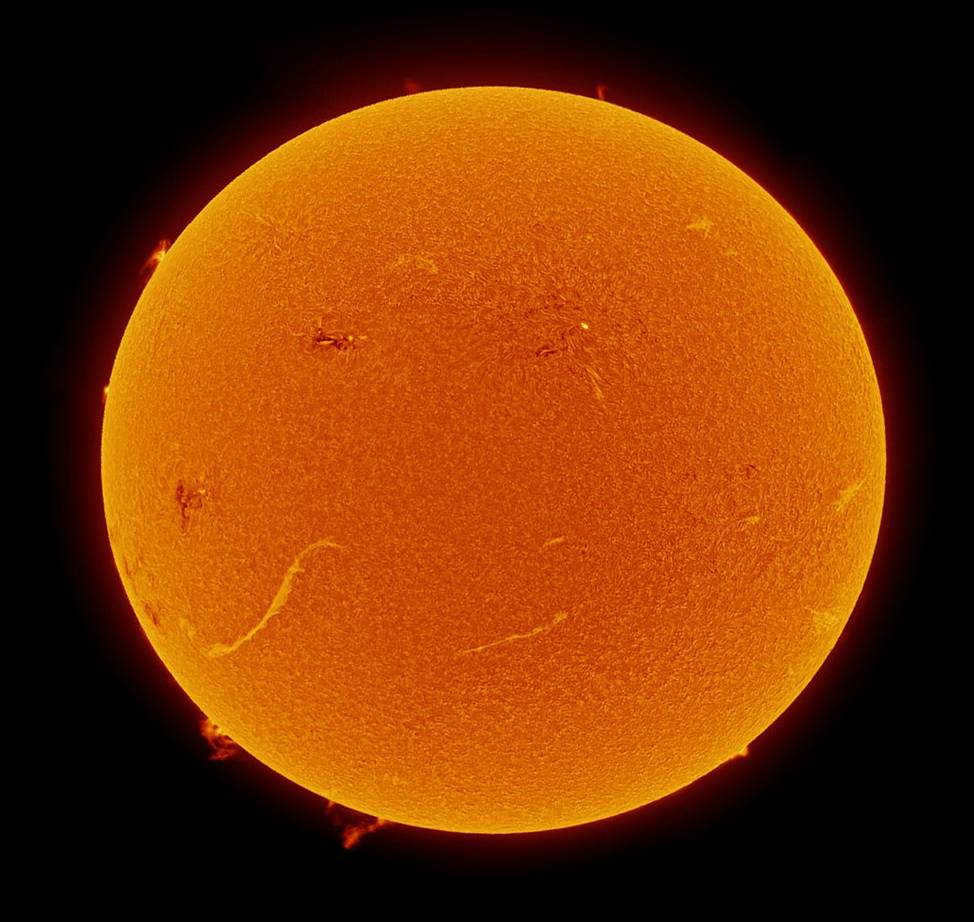
Thus, the temperature of a star can vary significantly depending on the location at which it is measured. For instance, within the core of our Sun, the temperature soars to a staggering 15 million degrees Celsius, while on the surface, specifically in the photosphere, the temperature plummets to a mere 5 thousand degrees.
However, there is also a stellar corona, which represents the uppermost layer of a star’s atmosphere. Remarkably, the temperature in this region is exceptionally high compared to the lower layers, reaching an astounding 900 thousand to 1 million degrees Celsius in the case of the Sun. The precise cause of this dramatic increase is still unknown to scientists, but it is undoubtedly influenced by the Sun’s magnetic field. This magnetic field plays a significant role in determining the final temperature of the star’s surface, but we will delve into this topic in more detail later.
The Sun, being the most widespread star in the Universe, possesses a temperature that is representative of the majority of observable stars. Nevertheless, there exist stars that are even hotter: the scorching surface of blue supergiant stars like Jeta in the constellation Korma can reach a staggering temperature of 200,000 °C! It is truly mind-boggling to contemplate the extreme temperatures within their cores, which surpass a hundred million degrees Celsius. Conversely, red giants are relatively cooler, with their photospheres heating up to a mere 2.5-3 thousand degrees Celsius.
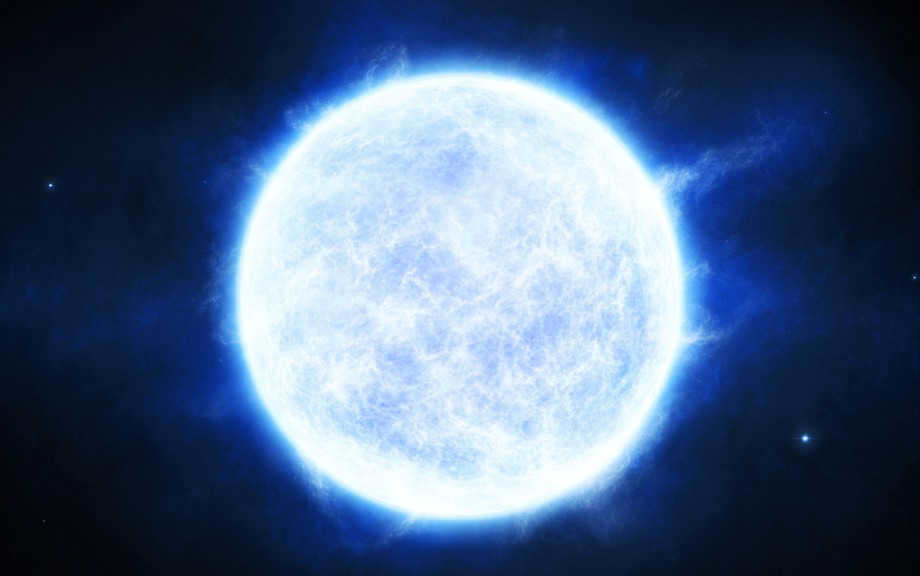
The color of a star is determined by its temperature. The hotter the star, the bluer its light appears. This color-temperature relationship is important in classifying stars into spectral classes. It is also a key factor in plotting stars on the Hertzsprung-Russell diagram, where it helps identify stars with similar characteristics and determine their age.
What causes the temperature disparity among stars?
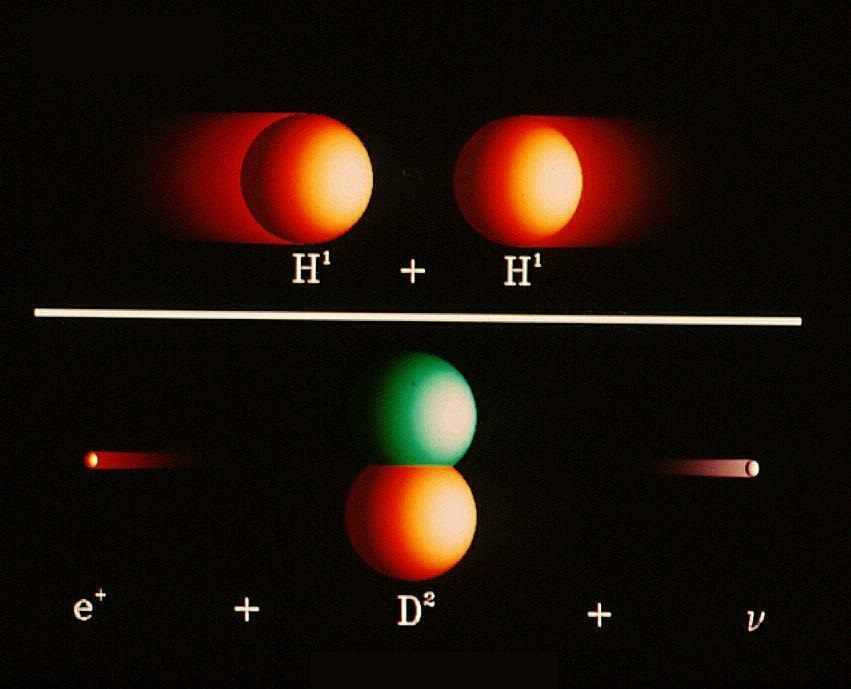
The initial bonding of hydrogen atoms is the first stage of the nuclear fusion process.
Truly, the variations in heating between a star’s core and its outer layer are quite remarkable. If the entire energy from the Sun’s core was evenly spread throughout the star, the surface temperature of our celestial body would reach several million degrees Celsius! Equally impressive are the temperature disparities between stars of different spectral classifications.
What needs to be understood is that a star’s temperature is influenced by two primary factors: the level of energy emitted by the core and the surface area available for radiation. Let’s delve deeper into these factors.
Radiation of energy from the core
While the core reaches temperatures as high as 15 million degrees, not all of this energy is transmitted to adjacent layers. Only the heat generated by the thermonuclear reaction is emitted. The energy resulting from gravitational compression, although substantial, remains confined to the core. Consequently, the temperature of the outer layers of the star is solely dependent on the intensity of the thermonuclear reactions occurring in the core.
Topic-based materials

Radiant surface area
However, stars not only produce energy, but they also release energy. As a result, the lower the temperature of a star, the more energy it emits. The amount of energy emitted is the main factor determining the size of the radiating surface area.
This principle can even be observed in everyday life – clothes dry faster when spread out on a wide rope. Similarly, the surface of a star expands from its core. The denser the core, the higher the temperature – and once a certain threshold is reached, the hydrogen outside the stellar core ignites due to the intense heat.
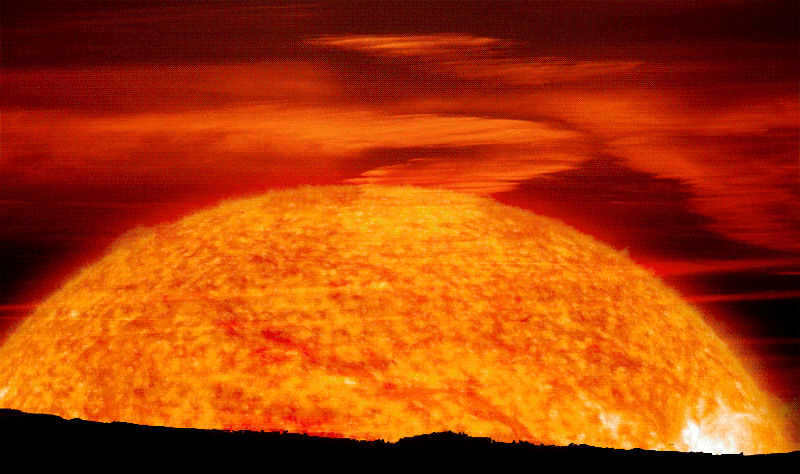
An artist’s conception shows the emergence of a blazing red giant.
Variations in surface temperature
Another significant aspect is that different regions on the surface of the same star can exhibit varying temperatures. These disparities can be as high as several thousand degrees Celsius! The variation is contingent on how energy is transmitted from the star’s core. Astrophysicists recognize two primary methods – radiative transfer and convection:
- During radiative transfer, the energy generated by nuclear fusion is emitted from the star’s core and travels through the stellar material in the form of rays. This mechanism is efficient in terms of energy conservation, but it operates at a slow pace. If the zone of radiative transfer is situated close to the star’s core, similar to our Sun, it can take tens of thousands of years for the rays to traverse the path.
- On the contrary, convection relies on a familiar natural principle – the upward movement of warm liquids and gases and the downward movement of cold liquids and gases. This principle applies to stars as well, as they are composed of gas. Within a star, the hotter layers heat up the stellar matter, causing it to rise to the cooler regions of the star with lower gas pressure. In these regions, the energy extracted from within is released as radiation.
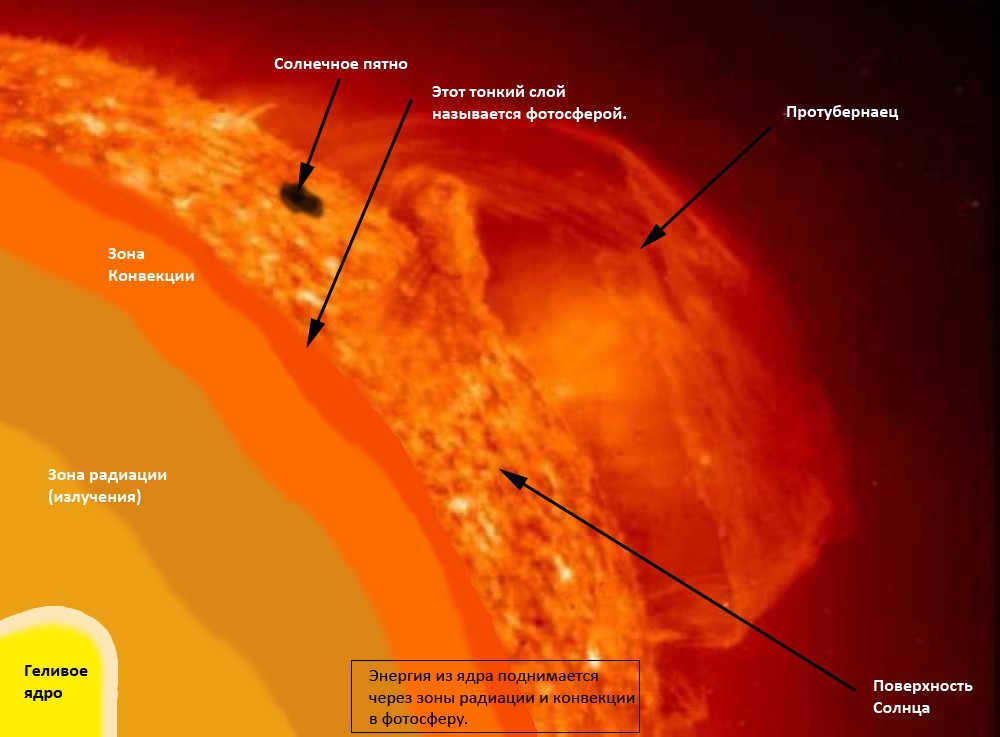
The arrangement of the radiative transfer and convection zones within a solar-type star is dependent on its mass. In stars that have a mass smaller than that of the Sun, convection is the dominant mechanism. Conversely, in more massive stars, heat is transported from the core to the outer layers primarily through convection, and then to the surface via radiative transfer.
The Sun, on the other hand, operates in the opposite manner: energy from its core is emitted in the form of radiation, which is then transported to the surface through convective streams of plasma. It is in the photosphere where the Sun’s energy is once again converted into light, including visible light that can be detected by the human eye.
Temperature variations occur on the surface of the Sun due to convection. These areas can also be visually distinguished. Flares, spots, and prominences are the three primary types.
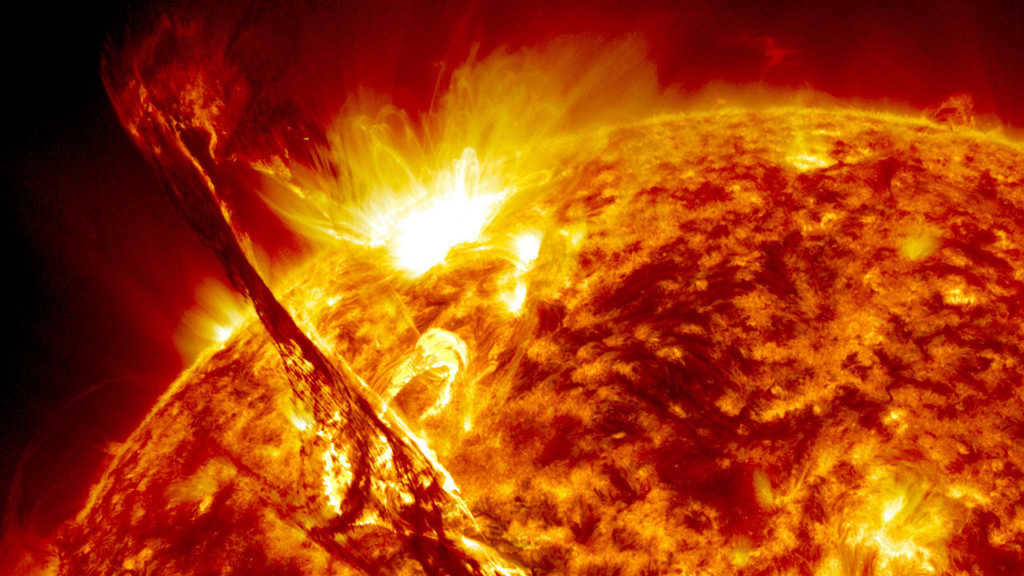
Spots, flares, and prominences
The occurrence of flares, sunspots, and prominences on the Sun is a result of the interaction between the star’s magnetic fields and the photosphere during periods of heightened activity. Flares manifest at specific locations where magnetic lines stimulate convective gas flows from deep within the Sun. Prominences, too, have a similar origin, but their magnetic field exit zone is narrower and the strength of magnetic lines is stronger. In contrast, spots impede the process of thermal transfer due to the presence of the magnetic field, resulting in their lower brightness and temperature.
As you are aware, stars have incredibly high temperatures, which are responsible for initiating thermonuclear reactions. When a molecular cloud is compressed by gravitational forces, it undergoes heating, causing the mass of molecules to increase. This increase leads to the synthesis of helium from hydrogen, resulting in the birth of a star.

Although all clouds are made up of hydrogen molecules, they vary in the number of particles they contain. This leads to variations in the mass of protostars. However, the process of star formation is generally similar.
Primarily, the temperature of stars increases during their initial formation and subsequent reactions in their core. As a result, the heat generated in the central part of the star rises to its outer layers, or surface. Since the internal conditions differ between celestial bodies, the surface temperature also varies.
It is important to mention that the temperature inside and outside of the star is not equal. It is fascinating to observe that the stellar corona, which is the outer layer of the atmosphere, is significantly hotter than the lower atmospheric layers. However, it should be noted that the nuclear heat is the most intense.

Factors that Determine a Star’s Temperature
The temperature of a star is influenced by two primary factors.
Firstly, the level of energy generated by its core. Scientists estimate that the core can reach temperatures of up to 15 million degrees. However, only the heat generated from thermonuclear reactions is emitted, while the energy from gravitational compression remains trapped at the center.
The surface temperature of stars is directly influenced by the intensity of internal processes and the elements involved in them. For instance, if not only helium is synthesized from hydrogen, but also heavier elements are involved in the synthesis, the radiative energy will be significantly increased. As a result, the surface temperature will rise.
Secondly, the crucial factor is the surface area responsible for emitting internal energy. The key concept is that stellar objects generate energy while simultaneously radiating it into outer space. The amount of energy they emit depends on the outer shell, specifically the radiating surface.
As stars expand their outer envelope, the core also expands. The denser the core, the hotter it becomes. However, this only applies internally, as these stars have a lower temperature in the photosphere, i.e., the outer layer. In simple terms, the larger the surface area, the higher the energy output.

The Hertzsprung-Russell diagram
As can be observed, the various spectral classes exhibit distinct characteristics.
How to ascertain and measure the temperature of stars
It is important to note that the effective temperature of an object is utilized for this particular attribute. In other words, the hotter the object, the greater amount of energy it emits. In the case of stellar bodies, their heat provides the measure of luminosity.
However, the effective temperature of stars is determined using the Stefan-Boltzmann law. This law states that the radiant power of a heated body is directly proportional to the surface area and the fourth power of the temperature.
where σ is a constant factor of 5.7*10-8,
S is the area, and P is the radiated power.
Actually, the temperature of stars is measured in Kelvin (K). However, it is possible to convert it to degrees Celsius (C).
Range of surface temperatures for stars
According to scientists, the surface temperatures of stars can vary. Cooler stars have temperatures ranging from 2000-5000 K, while the average temperature for yellow and orange stars is between 5000-7500 K. Hotter stars can reach temperatures as high as 7500-80000 K.

Naos (the hottest star)
Which stars possess the minimum temperature?
Stars that are colored red possess the minimum surface temperature. However, it is not entirely accurate to describe them as cold. This is because their degree of heat is equal to 2000-3000K.


Barnard’s star (one of the coldest stars).
Which kind of star possesses the highest level of heat
What are your thoughts on the surface temperature of the most scorching stars?
Incidentally, the most scorching stars exhibit blue or white hues. However, the blue ones reach the highest heat levels. Ponder upon it, their heat levels can reach as high as 40000K.
Therefore, we have discovered that the temperature and size of stars can differ. Moreover, their characteristics are interconnected.
It is evident that the temperature at the core of a star differs from the surface temperatures it can possess. This once again demonstrates the uniqueness of each celestial object. Despite certain similarities in their properties, there is inevitably a distinction in some other parameter.
This article may appear insignificant to some. It is aimed at those individuals who lack a clear understanding of what stars are. After all, we will be discussing the evolution of stars, and how can one discuss the evolution of something they have no comprehension of?
If we examine the elemental composition of the Universe, the majority consists of hydrogen (approximately 70%) and helium (approximately 30%). All other existing elements make up less than one percent.
You have the ability to transform them into celestial bodies.
Celestial bodies contain the majority of the observable mass in the Universe (in addition to the mysterious dark matter, the existence of which remains a mystery). Celestial bodies serve as the primary sources of energy in the Universe. They also function as universal factories, responsible for the creation of all other elements present in existence. This means that celestial bodies are not simply aesthetically pleasing specks in the night sky, but rather the fundamental catalysts for the conversion of matter and energy in the Universe. Without celestial bodies, the Universe would be an incredibly mundane place: abundant amounts of hydrogen, a small amount of helium, and nothing more.
So, what exactly are celestial bodies and how do they accomplish the remarkable feat of energy and matter transformation? It may seem peculiar, but an average celestial body is essentially a massive sphere composed primarily of hydrogen and helium, with a small mixture of other elements.
Stars come in various sizes and masses, but they are all significantly larger than Earth. Typically, the sizes and masses of stars are measured in solar diameters (radii) and masses. Therefore, it is important to note that our magnificent star, which sustains life on Earth, has a diameter of 1,392,000 km (109 times the diameter of Earth) and a mass of 1.9891*10 to the thirtieth degree kg (332,900 times the mass of Earth). The Sun is considered an average star, as there are stars both much larger and much smaller than it. There are limits to the possible masses of stars, with the lowest being about one hundredth of the Sun’s mass and the highest being about 150 solar masses. We will explore what lies beyond these limits later on.
However, hydrogen and helium, just like any other gas, have a tendency to fill up any space they are given. The absence of walls in the Universe raises the question of what prevents the gases that compose a star from dispersing throughout the entire Universe?
The primary force that governs the Universe is gravity. It is gravity that organizes the immense amounts of matter that would otherwise be uniformly distributed throughout the Universe, resulting in the absence of structure (and therefore the absence of structure in both you and me). The electromagnetic interactions that we are familiar with play a minimal role in the grand scheme of the Universe. Gravity not only prevents a massive amount of gas – the stellar body – from dispersing in all directions, but also imparts a spherical shape to the star (since each gas molecule, located at a certain distance from the star’s center, experiences an equal attractive force).
Alright, now we have a concept of a star: a massive sphere of gas composed of hydrogen and helium, held together by the force of gravity. Due to the immense mass of stars, the gravitational forces within them are also immense. However, why doesn’t this gas sphere collapse into a compact and dense mass under the influence of gravity, and how does it function as an energy and matter converter? And what’s the reason behind these spheres emitting light?
Gravity not only determines the shape, size, and density of stars, but it also causes them to emit light.
The gravitational forces compress the gas sphere to such an extent that an enormous pressure and temperature are generated at its core. This pressure and temperature give rise to thermonuclear reactions at the star’s core. Each star in existence is essentially a massive fusion reactor.
What is a thermonuclear reaction? It is the process by which one element is transformed into another element and energy is released. The most common thermonuclear reaction in stellar cores is the conversion of hydrogen into helium, as hydrogen is the most abundant element in stars. This reaction generates a significant amount of heat, further heating up the star. As we know, hot gas exerts a strong pressure, and the hotter the gas, the greater the pressure. This pressure acts in opposition to the gravitational forces that are compressing the star, creating a balance. This balance is known as hydrostatic equilibrium, where the star’s gravity is counteracted by its internal pressure. (Non-ordinary stars will be discussed at a later time.)
It’s important to acknowledge that the gas within a star differs from the atomic or molecular form we are familiar with. The extreme temperatures, pressures, and thermonuclear reactions cause atoms to be destroyed, resulting in electrons being stripped from their shells. As a result, this gas is not ordinary; it becomes ionized and consists of a combination of atoms, nuclei, and electrons. Therefore, it can be classified as plasma.
However, the number of stars in the universe that are capable of producing elements heavier than helium is relatively small.
Do you recall the main sequence on the Hertzsprung-Russell diagram? It is a prominent diagonal band that spans the entire diagram and contains 80% of all stars. These main sequence stars are characterized by hydrogen fusion occurring in their cores.
Stars contain such vast amounts of hydrogen that it can sustain fusion reactions for millions and billions of years. For instance, our Sun, a typical main sequence star, has been converting hydrogen into helium for approximately four and a half billion years and will continue to do so for a similar duration of time.
On the other hand, elements heavier than helium, such as lithium to iron, are synthesized in giants, supergiants, and hypergiants.
By the way, in the field of astronomy, any substances that are heavier than helium are referred to as metals. It can be quite challenging to adjust to this terminology, as for astronomers, oxygen, carbon, silicon, and sulfur are all considered metals! The metallicity of a star refers to the concentration of metals (in the astronomical sense) within it. This measure of metallicity is a crucial factor in determining the potential for rocky planets (and consequently, life) to exist within that star system. Since planets are created from the same material as their host star, if the star primarily consists of hydrogen and helium with minimal other metals, then the resulting planets will likely be composed predominantly of gas.
It is safe to assume that a star is not simply a uniform sphere of gas. Fusion reactors tend to be much more complex than that. The interplay between gravity, pressure, and thermonuclear reactions shapes the star and dictates its internal structure.
Let me explain the functioning of a typical main-sequence star (including the Sun):
– In the core of the star, which is located at its center, thermonuclear reactions are occurring at extremely high temperatures, reaching millions of degrees. The core is also incredibly dense.
– Surrounding the core is a radiation zone, where energy generated in the core is transmitted outward, towards the outer layers of the star, through radiation. The matter in this zone remains stationary.
– Beyond the radiation zone lies the convection zone, where the matter is actively circulating, effectively carrying the heated internal masses towards the surface.
(However, in stars that are exceptionally large and heavy, the convection zone and the emission zone are reversed in order.)
– Next comes the photosphere, an opaque and thin layer that obscures our view of the star’s interior. When we discuss the color and temperature of a star, we are referring to the color and temperature of the photosphere. The photosphere exhibits spots (similar to “sunspots,” but they can occur on any star) – regions of cooler temperature that are formed through a still unknown mechanism.
– Beyond the photosphere lies the star’s atmosphere, which includes the chromosphere, the transition layer, and the corona. The star’s atmosphere is highly rarified and can extend for millions of kilometers. Enormous stellar flares manifest in the star’s atmosphere, while prominences emerge from the surface of the star.
– There is a stellar wind that extends even further into space, consisting of streams of extremely hot particles that have been separated from the star.
This diagram shows the internal structure of a typical star that is in the middle of its main sequence. The numbers provided are in reference to the Sun.
It should be noted that nuclear reactions occur exclusively in the star’s core. Consequently, only the hydrogen that was initially present in the core or somehow migrated there from the outer layers through mixing can undergo the transformation into helium. Our Sun possesses a radiation zone encircling its core, within which no mixing of matter takes place, allowing only the hydrogen within the core to burn and continue to burn within the Sun. This accounts for merely 10% of the total hydrogen within the Sun. Conversely, small red dwarfs are entirely convective, lacking a radiation zone, resulting in complete mixing of matter. Consequently, they are capable of burning all the hydrogen they contain.
The color of a star is determined by its surface temperature, while its brightness depends on both the star’s luminosity and its distance from us. The flickering of stars, on the other hand, is primarily caused by the movement of air currents in our atmosphere.
Our project’s main interface is continually being updated with new features. However, older browsers may not be compatible with these modern software products. To ensure proper functionality, please use the latest versions of Chrome, Mozilla Firefox, Opera, Microsoft Edge, or install the Atom browser.
The distinction between the brightness and luminosity of a star should be acknowledged. When considering the luminosity of a star, there are two significant factors to consider: the absolute stellar magnitude, which represents the apparent brilliance of the star if it were situated 10 parsecs away, and the actual amount of energy emitted by the star in one second, known as luminosity. Additionally, there is another factor to consider when evaluating a star: the apparent stellar magnitude, which indicates how well we can perceive the star.
For the purpose of this discussion, we will focus on the luminosity of a star.
The luminosity of a star represents the total radiant energy emitted by the star over a specific time period. It is closely linked to various characteristics of a star.
The quantity of energy emitted during a nuclear reaction is directly influenced by the mass of the star. The greater the mass, the stronger the gravitational force compresses the glowing core, leading to a higher conversion rate of hydrogen into helium. However, the luminosity of a star is not solely determined by nuclear energy; it must also be radiated outward.
So, what significance does luminosity hold in the field of astronomy?
Utilizing luminosity in the field of astronomy.
In the previous passage, reference was made to how the temperature of a star impacts its luminosity. Astronomers make use of this correlation to ascertain the characteristics of a star – particularly when the color, which is the most precise indicator of the object’s heating, is distorted by the force of gravity. Furthermore, the brightness of a star is indirectly linked to its composition. The smaller the number of elements that are heavier than helium and hydrogen present in the matter of a star, the greater the mass it can acquire – a crucial attribute when determining the luminosity of a star.
However, why is it that when we gaze at the sky, stars with equal luminosity do not appear equally bright?
If you enjoyed reading this article, I hope you had a great time. Don’t forget to show your appreciation by giving it a thumbs up, and feel free to explore my other written pieces as well.
Stars exhibit variations in brightness because they are positioned at varying distances from us and possess diverse physical sizes and temperatures, resulting in differing luminosity.
The system of stellar magnitudes operates on a logarithmic scale, where the most luminous entities possess lower stellar magnitudes (even reaching negative values), while the least luminous ones have higher stellar magnitudes (approaching infinity).
For instance: The Sun, the most luminous entity in the sky of the Earth, possesses a stellar magnitude that is negative (-26.74 m). The full moon is also highly luminous and can be observed as a star (-12.7 m). However, both the Moon and the Sun are not sources of light that appear as points, but instead are perceived as disks. Therefore, their entire luminosity is considered as a whole, encompassing the entire observed area. Venus, during its optimal periods, can be spotted with the naked eye as a point source of light, yet it still possesses a greater luminosity, or negative stellar magnitude (-4.6 m).
Among the stars, Sirius possesses the highest apparent brilliance (-1.46 m). Although Sirius is observable from our latitudes, this star is situated in the southern hemisphere of the celestial sphere. In the northern celestial hemisphere, the star with the greatest brightness is Arcturus (-0.5 m). Vega’s luminosity is close to zero and was previously regarded as a reference zero; however, more precise measurements have determined that its brightness is 0.3 m, indicating a slightly positive value.
For reasons unbeknownst to me, many individuals believe that Polaris is the brightest star in the nocturnal sky. Perhaps this misconception stems from its popularity, although the two are not necessarily correlated. In terms of visual stellar magnitude, Polaris is only 2 m. This means that Polaris shines less brightly in the sky compared to Vega and even fainter than numerous other stars in the celestial sphere.
What exactly is stellar magnitude? Seek answers within the clouds.
Under optimal conditions in a dark sky with eyes adapted to the darkness, a person can perceive stars with a brightness of about 6 magnitudes. It is commonly believed that stars with a magnitude of 1 are exactly 100 times brighter than stars with a magnitude of 6. In other words, a decrease of one magnitude corresponds to a decrease in brightness by a factor of 2.512. A decrease of two magnitudes corresponds to a decrease in brightness by a factor of 6.31 (2.512 x 2.512 or 2.512^2) and so on. Let’s illustrate this with an example:
How many times are stars with a brightness of 6 magnitudes dimmer than stars with a brightness of 1 magnitude? We have: 6 – 1 = 5 magnitudes. Therefore, 2.512^5 = 100 times.
Let’s now compare the brightness of Polaris (magnitude 2) and the brightest star in the night sky – Sirius (magnitude -1.46): 2 – (-1.46) = 3.46 magnitudes. Hence, 2.512^3.46 = 24.21 times. It turns out that Sirius is over 24 times brighter than Polaris.
Task:
1. A 150 mm telescope can see stars as faint as 13 m in ideal conditions. How many times fainter are these stars compared to the dimmest stars visible to the naked eye? Assuming a person with perfect eyesight and under ideal observing conditions can see stars up to 7.5 m.
2. What is the brightness ratio between the Sun and Sirius?
Please leave your answers in the comments section. Prepared by: Alexey Shchegelsky
Did you enjoy the content?
Feel free to become a part of our community:
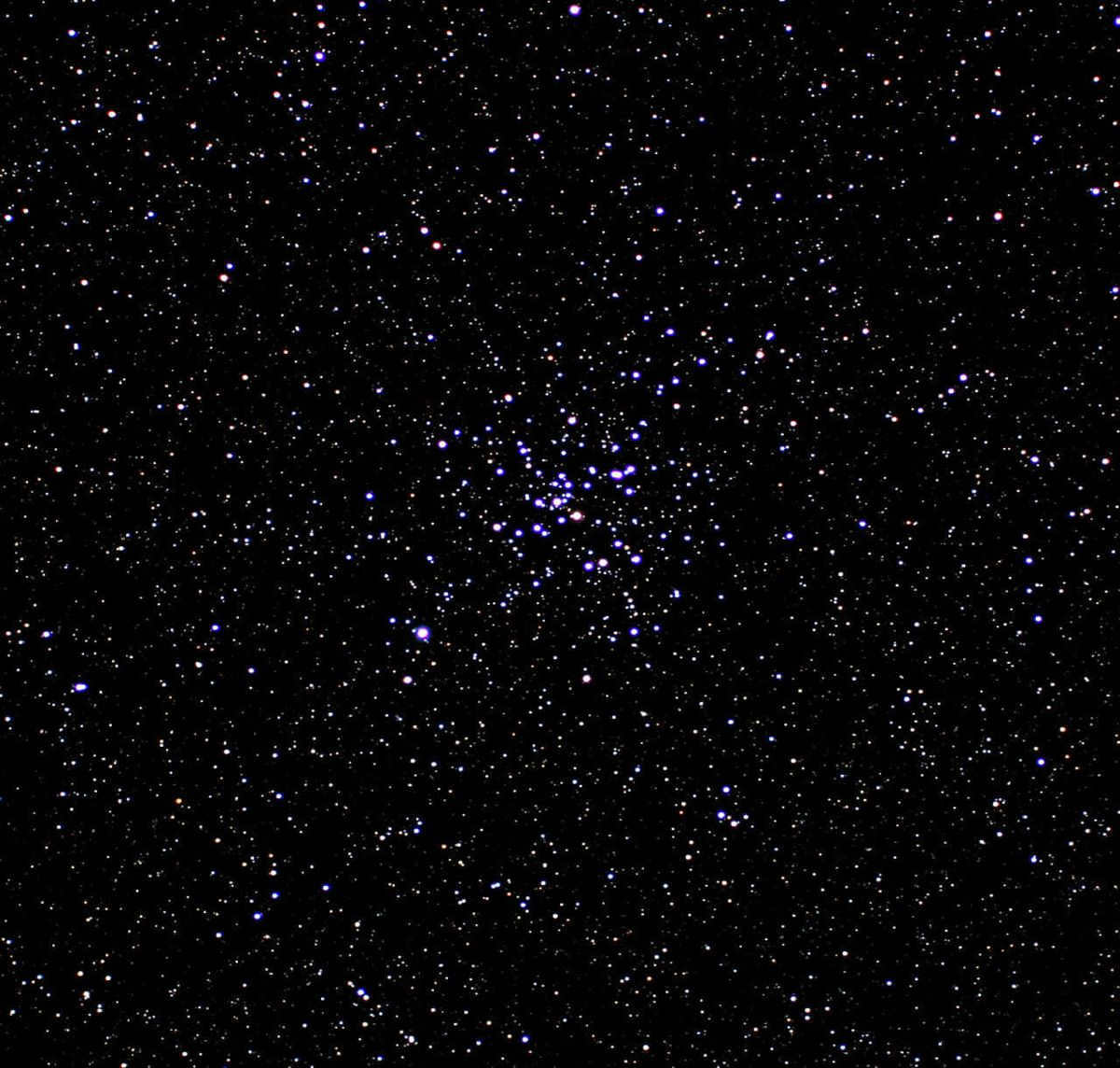
Variations in Stellar Color
Variations in the color of stars can be attributed to the variances in their temperatures. Let’s delve into the scientific explanation behind this phenomenon. Light is a form of wave radiation, and the distance between the peaks of these waves is known as wavelength. In the case of light waves, they are incredibly short. How short? Imagine dividing an inch into 250,000 equal parts (1 inch equals 2.54 centimeters). Only a fraction of these parts would constitute the length of a single light wavelength.

Despite the minuscule wavelength of light, even the smallest variation in the size of light waves can have a profound impact on the color we perceive. This is due to the fact that light waves with different wavelengths are interpreted by our eyes as different colors. For instance, the wavelength of the color red is one and a half times longer than the wavelength of the color blue. White light is a combination of photons with varying wavelengths, resulting in a blend of different colors.
We have observed in our daily lives that the temperature of an object influences its color. For instance, if we place an iron poker in a fire, we will notice that it gradually changes color as it heats up. Initially, it becomes red, but as it continues to heat up, it becomes even more vibrant in its red hue. If we were able to increase the temperature further without causing the poker to melt, it would transition from red to orange, then to yellow, and eventually to white. If the heat were to intensify even more, the poker would finally reach a blue-white color.
An example of this phenomenon can be seen in the sun, which is a yellow star. Its surface temperature is approximately 5,500 degrees Celsius. In comparison, the surface temperature of the hottest blue star exceeds 33,000 degrees Celsius.
Physical laws connecting color and temperature have been established by scientists. When a body becomes hotter, more energy is emitted from its surface and the wavelengths that are emitted become shorter. In comparison, the color blue has a shorter wavelength than red. Consequently, if a body is emitting light in the blue wavelength range, it is hotter than a body emitting red light. The particles emitted by the glowing gases of stars are known as photons. The energy of these photons increases and their wavelength becomes shorter as the temperature of the gas rises.

That is why the most recent and hottest stars emit light in the range of blue to white. As stars consume their nuclear fuel, they gradually cool down. Hence, older stars that are cooling emit light in the red range of the spectrum. Stars that are in their middle age, like our Sun, emit light in the yellow spectrum.
Our Sun is located 149 million kilometers away from Earth, allowing us to observe its color accurately. However, other stars are trillions of kilometers or even farther away from us. Even with the aid of powerful telescopes, it remains uncertain what color these stars are. To determine their color, scientists utilize a specialized device called a spectrograph. This instrument enables the identification of the spectral composition of starlight.
The determination of a star’s age through its color
Astronomers ascertain the color of a star based on the most concentrated radiation in its spectrum. By knowing the star’s color, it is possible to calculate the temperature of its surface using straightforward mathematical equations. Through temperature estimation, astronomers can infer the age of the star.





